-
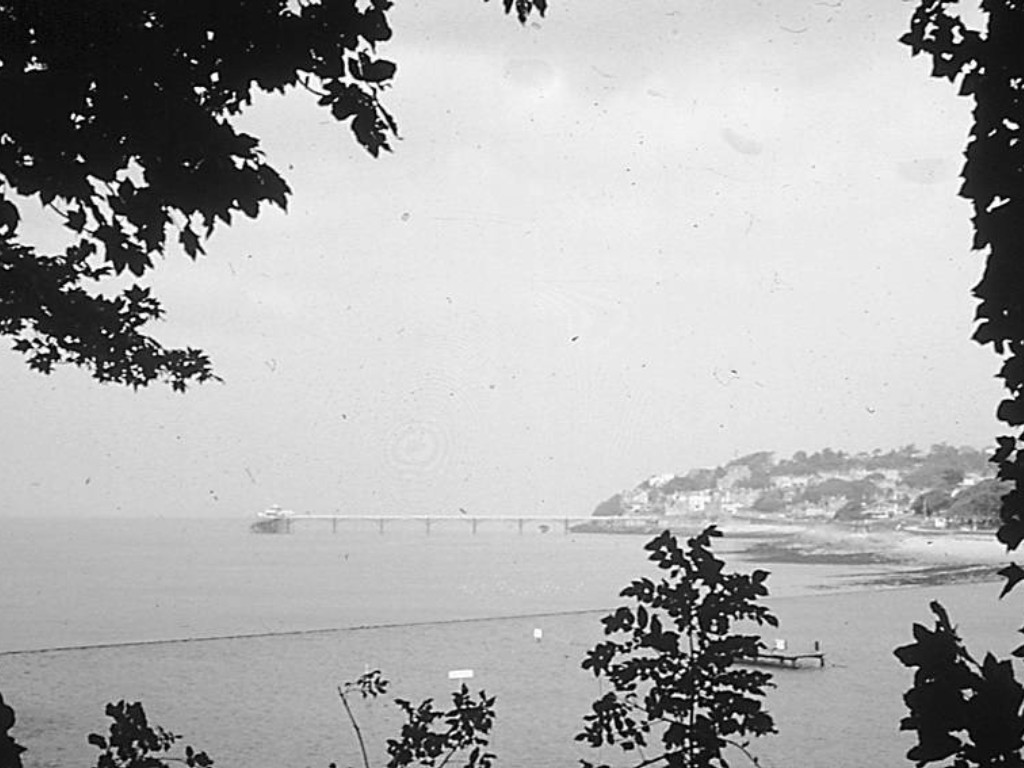 The photographer’s view of the seafront - this shot is still possible today and looks very much the same over fifty years later.
The photographer’s view of the seafront - this shot is still possible today and looks very much the same over fifty years later.
-
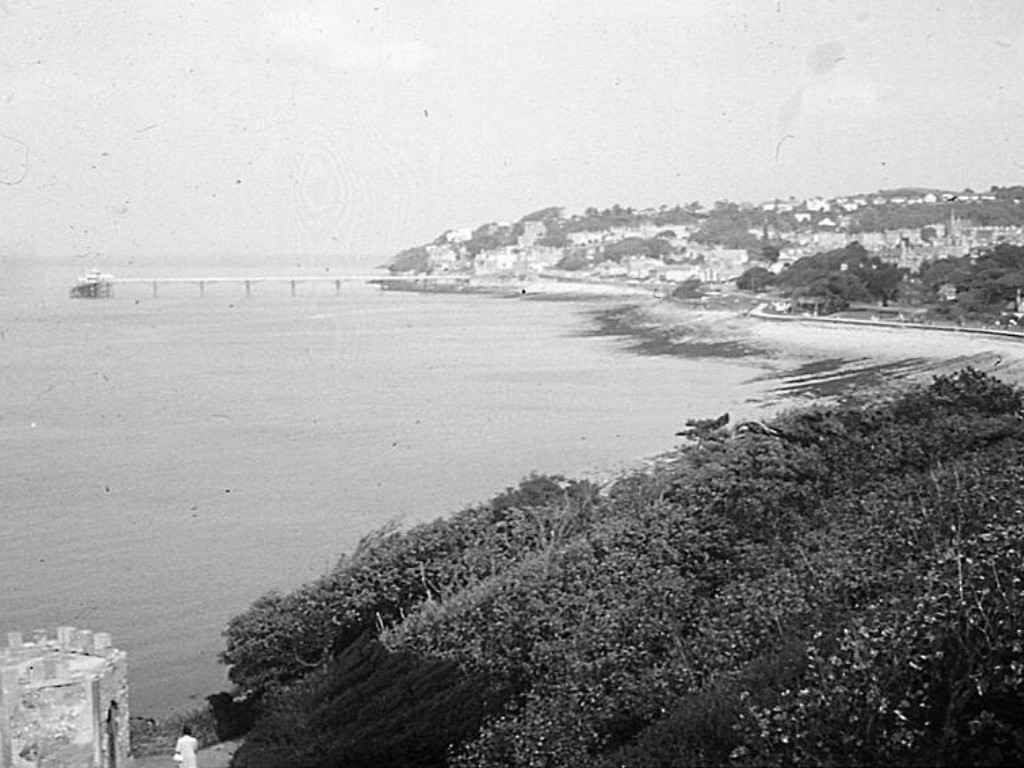 The ‘Sugar Lookout’ (below left) became a ruin soon after this photograph was taken. It was rebuilt by the Civic Society in 2005 to celebrate their 35th anniversary. See our ‘Our Environment’ pages for more details.
The ‘Sugar Lookout’ (below left) became a ruin soon after this photograph was taken. It was rebuilt by the Civic Society in 2005 to celebrate their 35th anniversary. See our ‘Our Environment’ pages for more details.
-
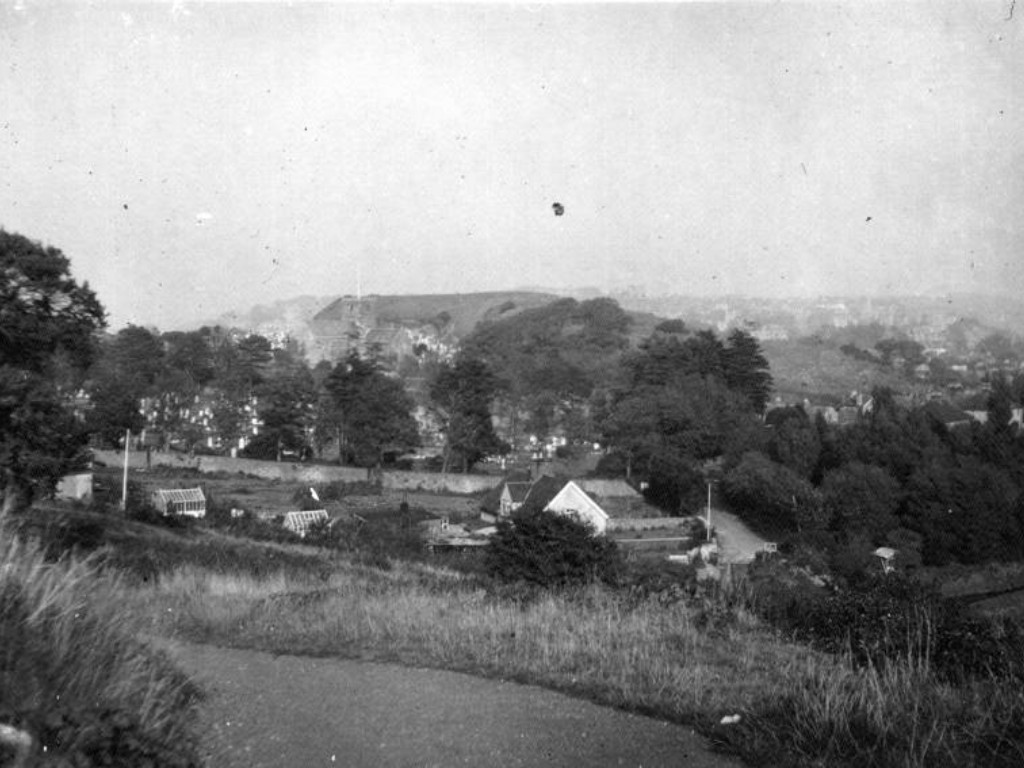 This 1946 photograph was taken by Hrolf Trump, a local vet working at Mr Peat's practice in Old Church Road. Hrolf was also the lighting designer for the Clevedon Playgoers Club in the 1940's and 50's, when they performed at the St John's Hall.
This 1946 photograph was taken by Hrolf Trump, a local vet working at Mr Peat's practice in Old Church Road. Hrolf was also the lighting designer for the Clevedon Playgoers Club in the 1940's and 50's, when they performed at the St John's Hall.
-
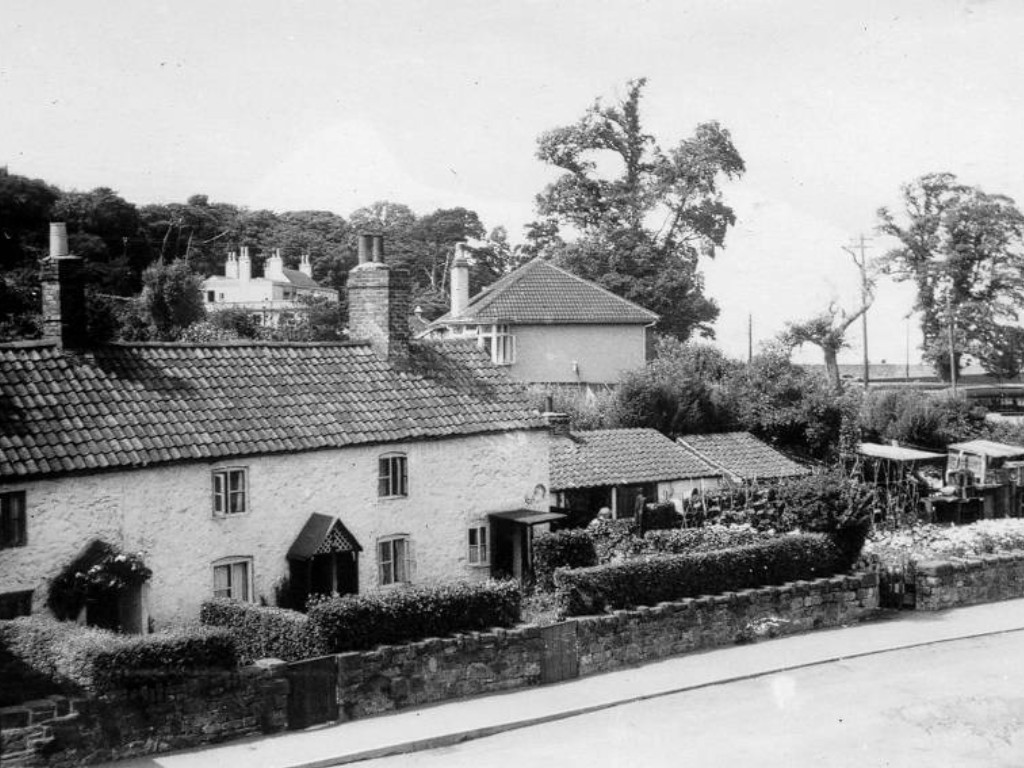 The this view of 'Hacks Cottages' in Old Church Road was also taken by Hrolf Trump in 1946 from the window of his home at 194.
The this view of 'Hacks Cottages' in Old Church Road was also taken by Hrolf Trump in 1946 from the window of his home at 194.
-
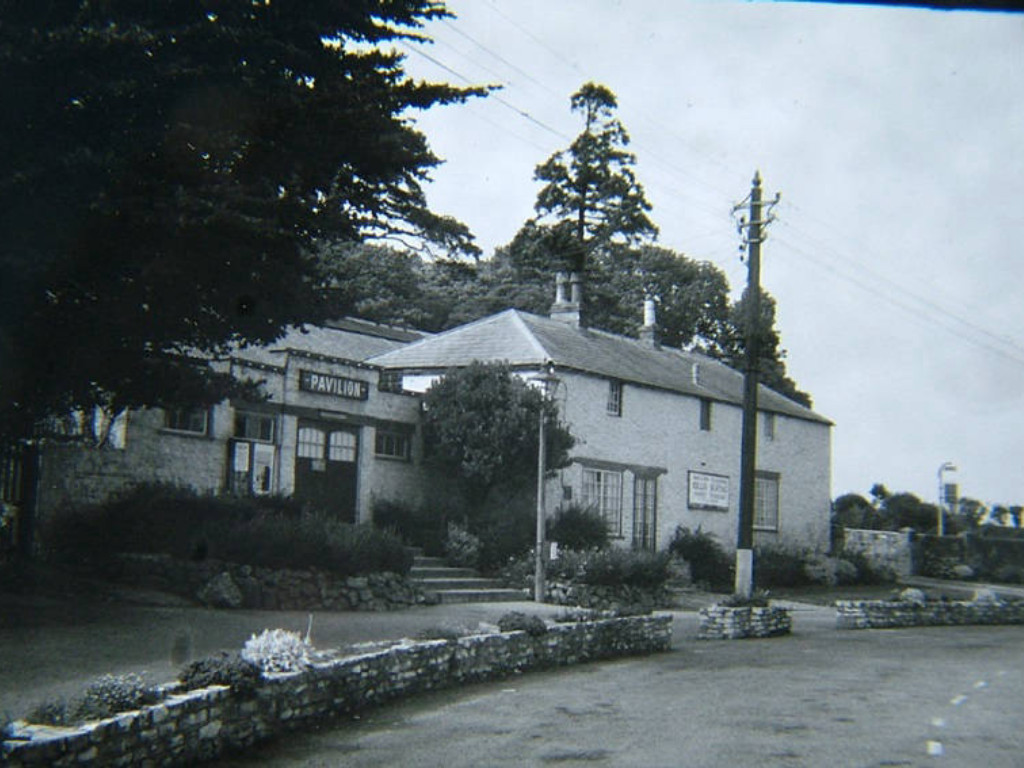 Geoff’s parents were founder members of the Clevedon Light Opera Club, and the first dozen or so shows this group performed were staged here before they moved to the newly built ‘New Hall’ later renamed the ‘Princes Hall’.
Geoff’s parents were founder members of the Clevedon Light Opera Club, and the first dozen or so shows this group performed were staged here before they moved to the newly built ‘New Hall’ later renamed the ‘Princes Hall’.
-
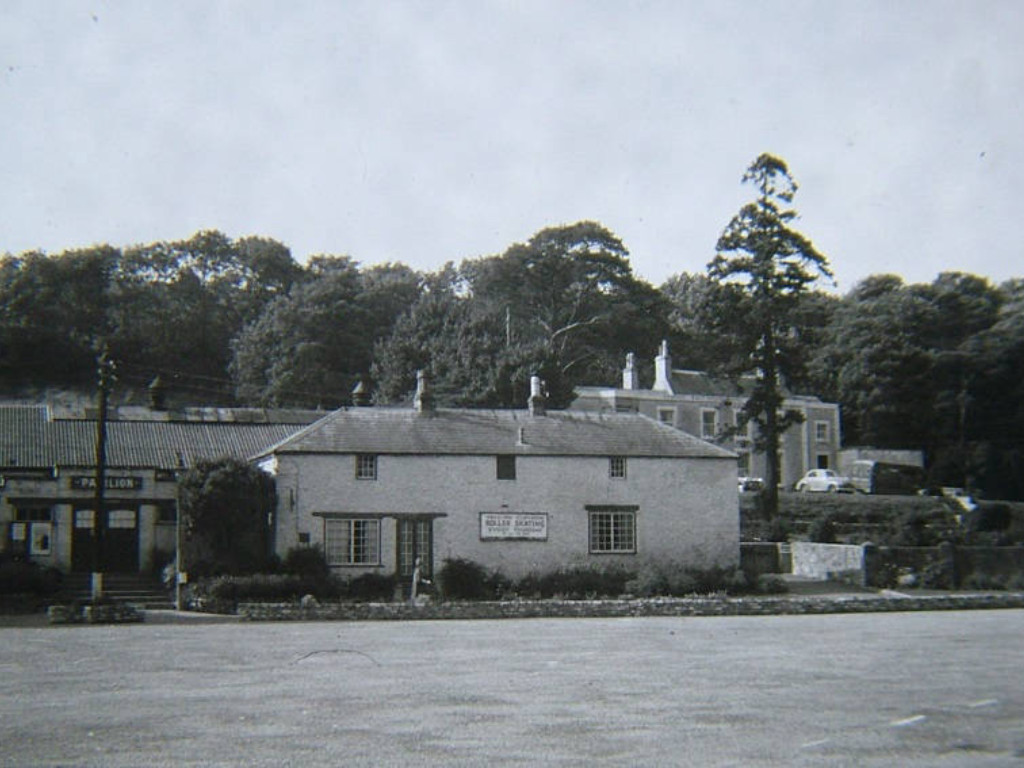 Much can be written about this venue which was also used to stage summer shows, these being produced by the town’s Entertainment Manager Matt Clarke. There was also a glass pavilion next door to the beach bowling green at the end of the lake which was also used for small variety productions.
Much can be written about this venue which was also used to stage summer shows, these being produced by the town’s Entertainment Manager Matt Clarke. There was also a glass pavilion next door to the beach bowling green at the end of the lake which was also used for small variety productions.
-
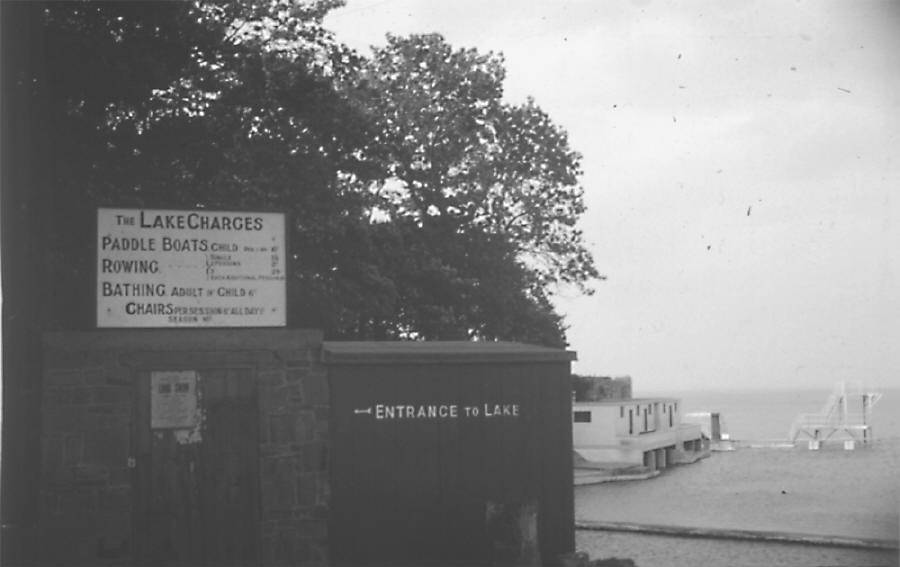 The entrance to the lake and swimming pool: Rowing and paddle boats could be hired from here, and this was also the entrance to the changing rooms located in the white building.
The entrance to the lake and swimming pool: Rowing and paddle boats could be hired from here, and this was also the entrance to the changing rooms located in the white building.
-
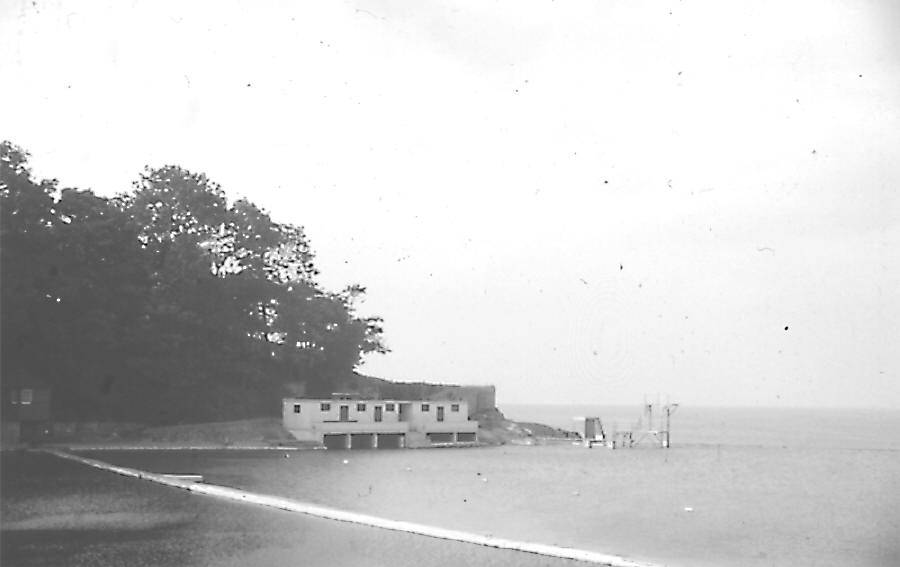 The lake is flushed during spring tides, but along with the fresh water comes many tons of Severn mud. Another source of this mud was from us youngsters, who delighted in spending an afternoon, during low tide, mud-bathing/fighting, and afterwards where better to clean off this mud than in the swimming pool which was easily accessed by climbing up the sea wall?
The lake is flushed during spring tides, but along with the fresh water comes many tons of Severn mud. Another source of this mud was from us youngsters, who delighted in spending an afternoon, during low tide, mud-bathing/fighting, and afterwards where better to clean off this mud than in the swimming pool which was easily accessed by climbing up the sea wall?
-
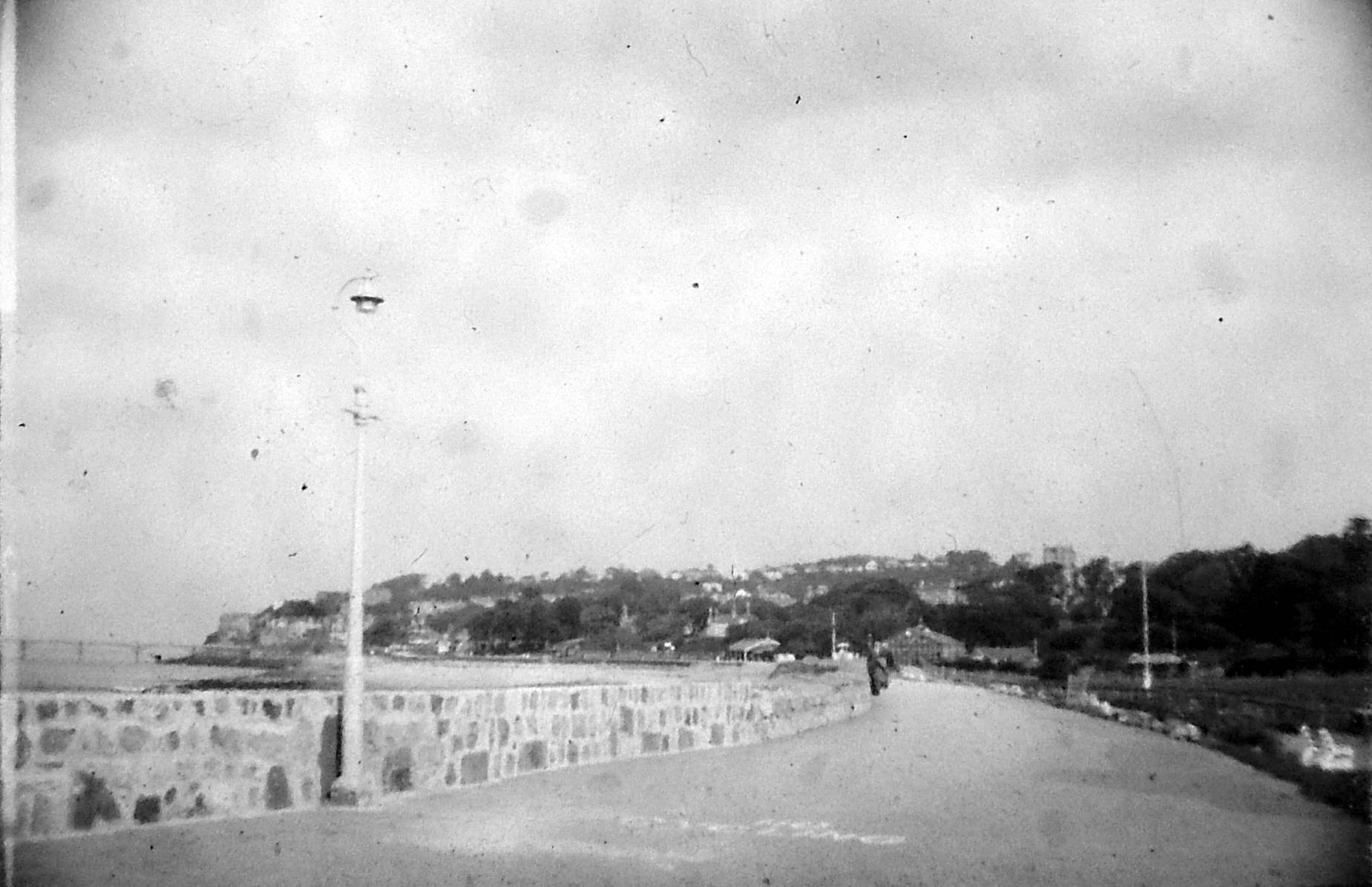 As a biochemist, Geoff's father was concerned about the health of the swimming pool. He allegedly proved that the water contained many dangerous bugs including polio. Geoff was forbidden to bathe!
As a biochemist, Geoff's father was concerned about the health of the swimming pool. He allegedly proved that the water contained many dangerous bugs including polio. Geoff was forbidden to bathe!
-
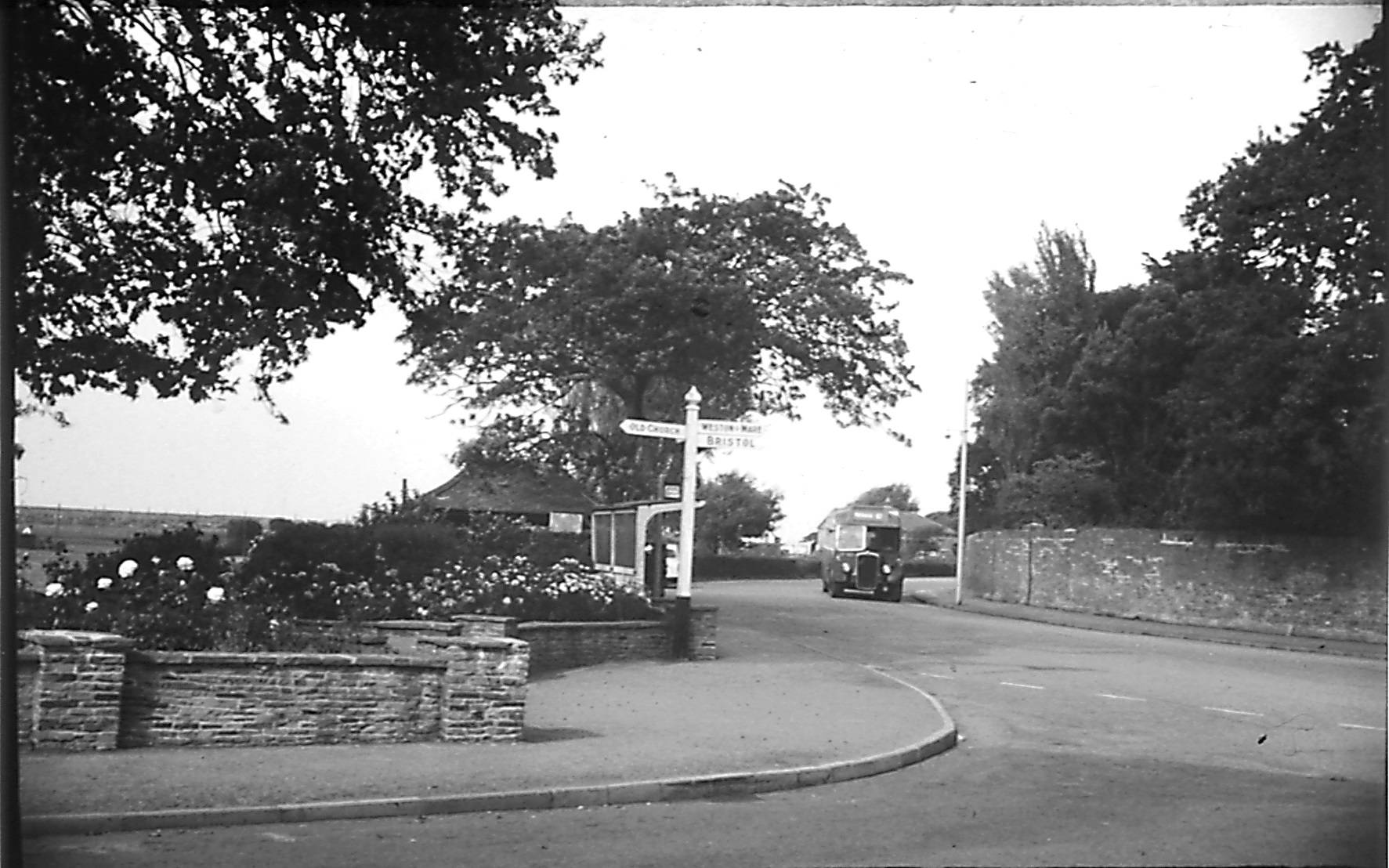 The number 25 bus went to Bristol via Nailsea and Wraxall and the number 33 went to Weston-super-Mare via Yatton. This single-decker bus was on its way to Wrington.
The number 25 bus went to Bristol via Nailsea and Wraxall and the number 33 went to Weston-super-Mare via Yatton. This single-decker bus was on its way to Wrington.
-
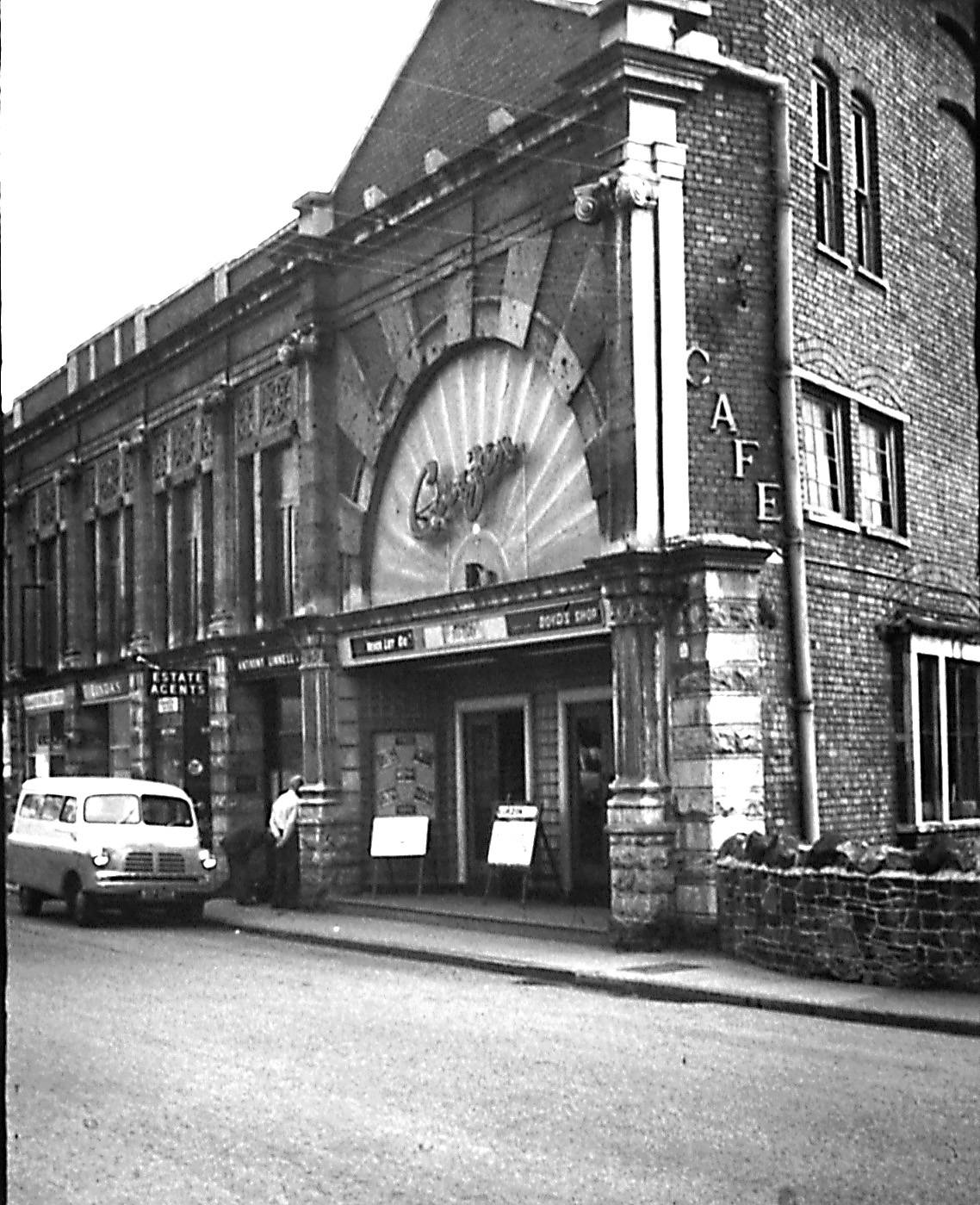 Geoff started going to Saturday morning pictures here when the cinema was called 'The Maxime', soon after he moved to live in Clevedon in 1947.
Geoff started going to Saturday morning pictures here when the cinema was called 'The Maxime', soon after he moved to live in Clevedon in 1947.
-
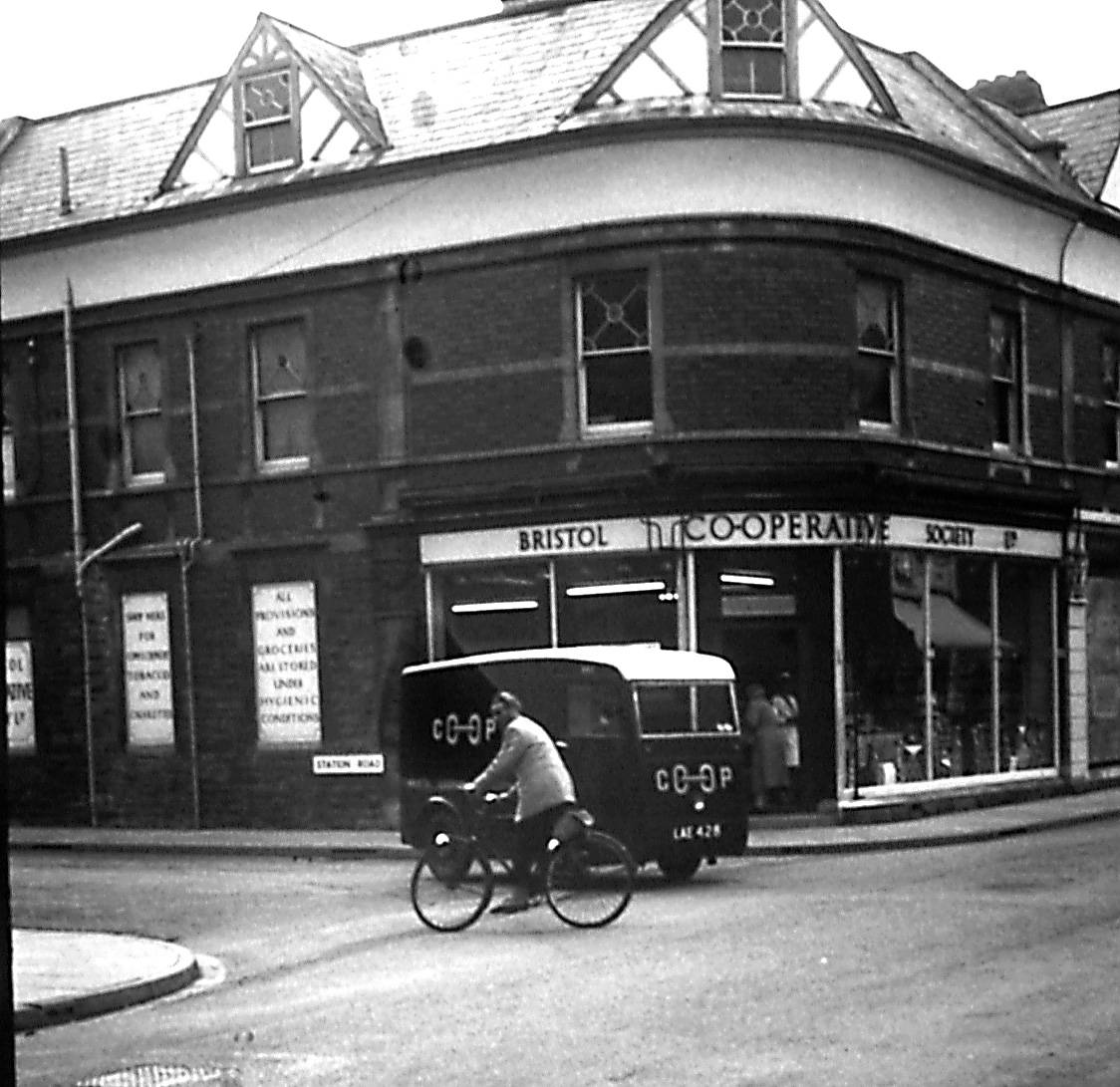 This Co-op store was located at the Old Church Road end of Station Road - don’t forget your ‘divvi’!!
This Co-op store was located at the Old Church Road end of Station Road - don’t forget your ‘divvi’!!
-
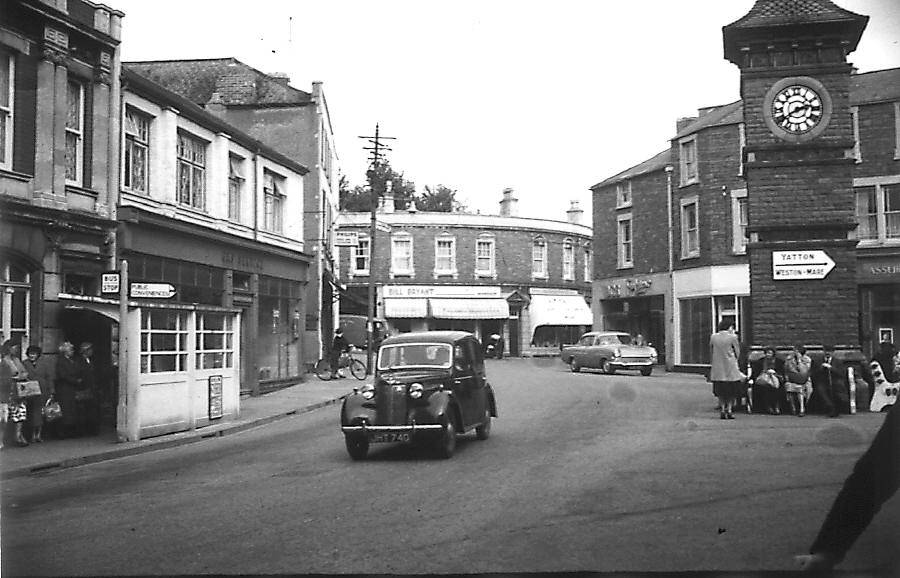 The Triangle, in the lower part of the town, is the joining of Old Church Road (from the sea-front), Old Street (from Bristol) and Kenn Road (from Yatton and Weston-super-Mare.
The Triangle, in the lower part of the town, is the joining of Old Church Road (from the sea-front), Old Street (from Bristol) and Kenn Road (from Yatton and Weston-super-Mare.
-
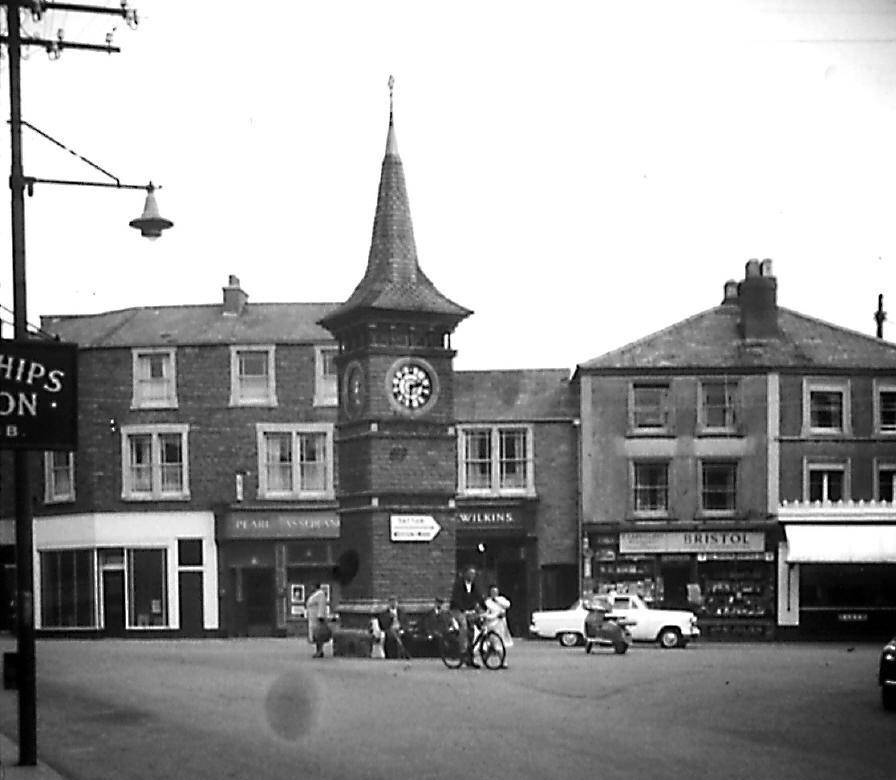 The Triangle.
The Triangle.
-
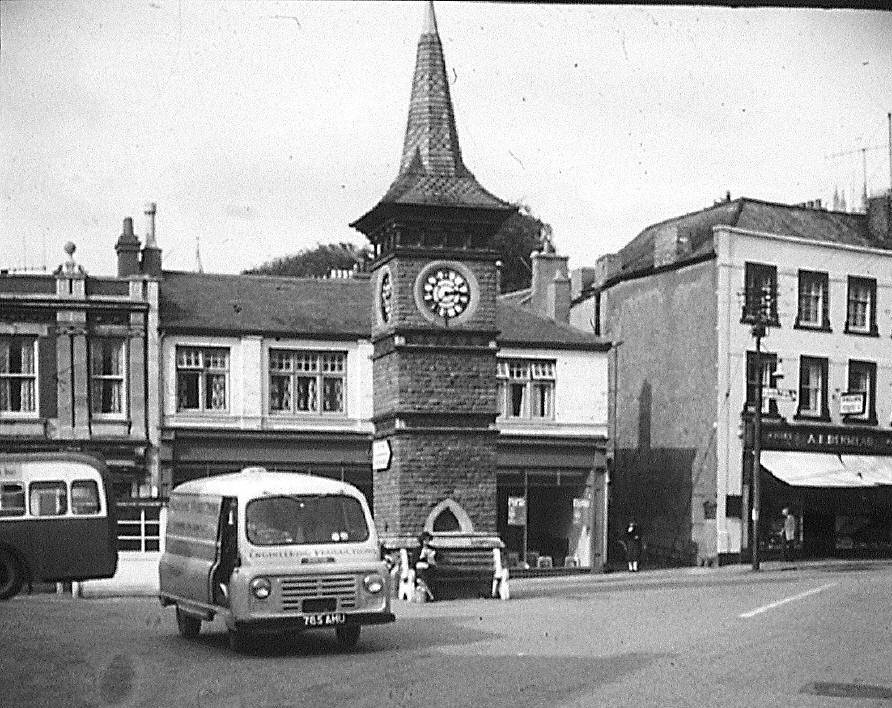 The Triangle.
The Triangle.
-
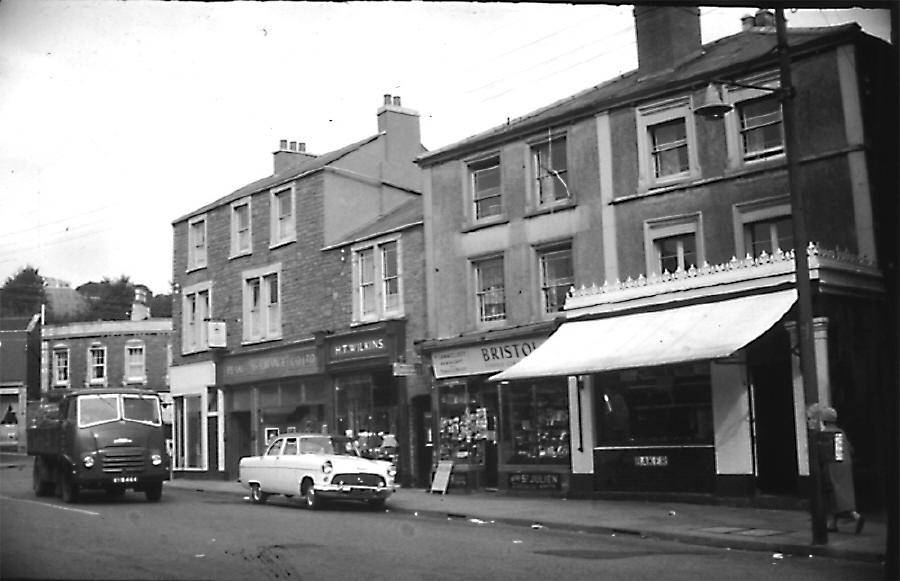 The Triangle.
The Triangle.
-
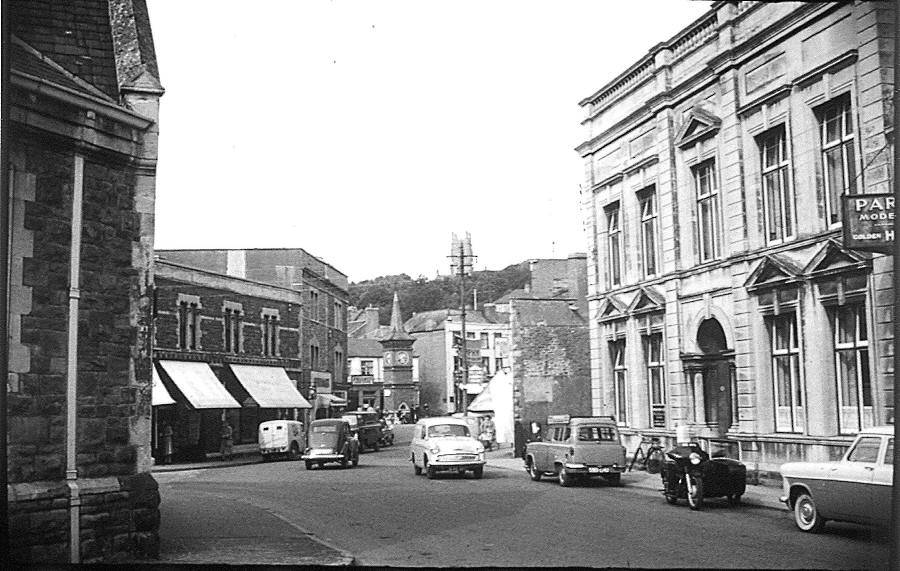 The ‘Consti Club’ can be seen on the right with the corner of the railway station on the left.
The ‘Consti Club’ can be seen on the right with the corner of the railway station on the left.
-
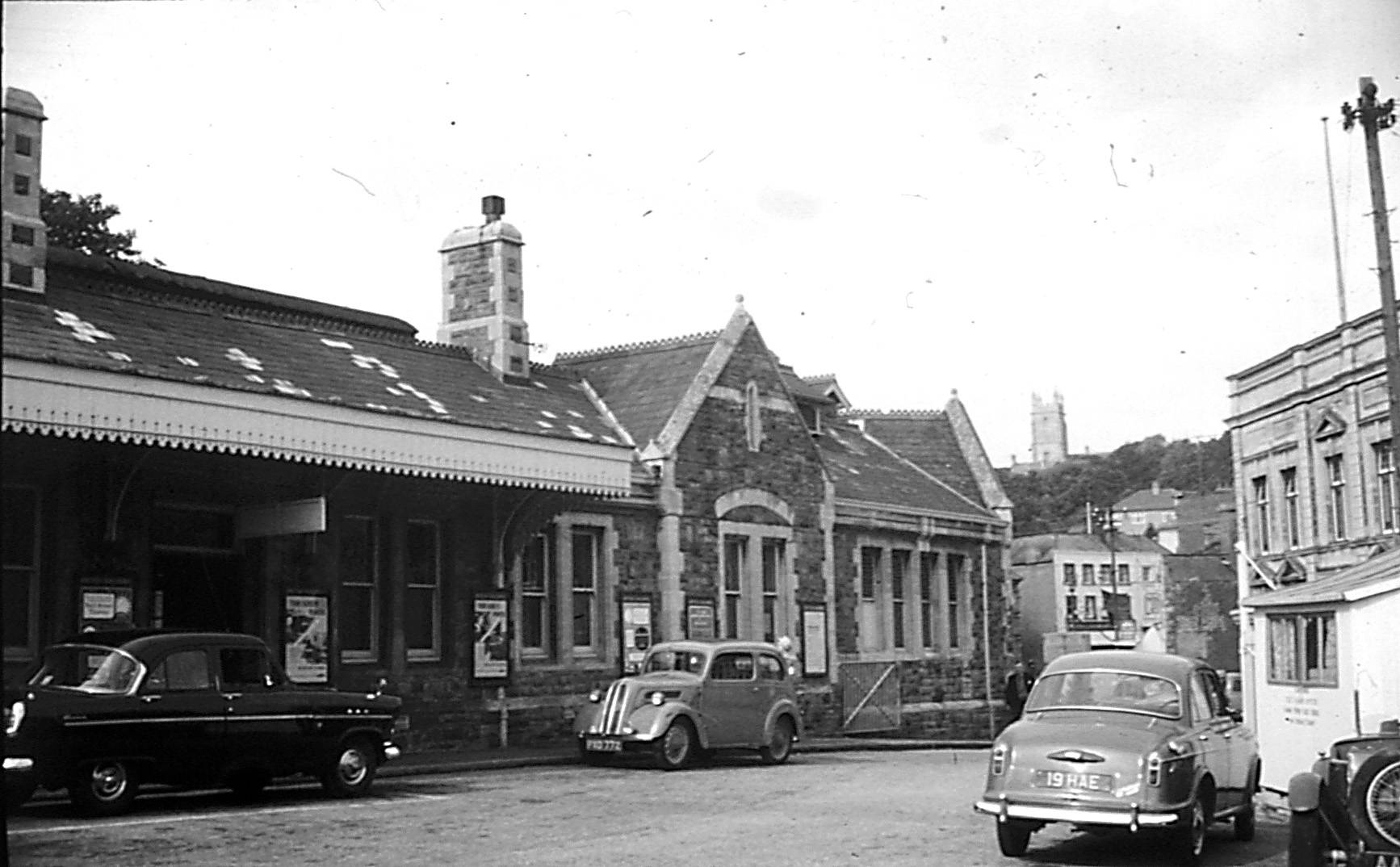 The end of the very short branch line from Yatton. Geoff remembers that the line passed under five bridges. The train was of the push and pull variety, having two special carriages, and a steam tank engine on the Clevedon end.
The end of the very short branch line from Yatton. Geoff remembers that the line passed under five bridges. The train was of the push and pull variety, having two special carriages, and a steam tank engine on the Clevedon end.
-
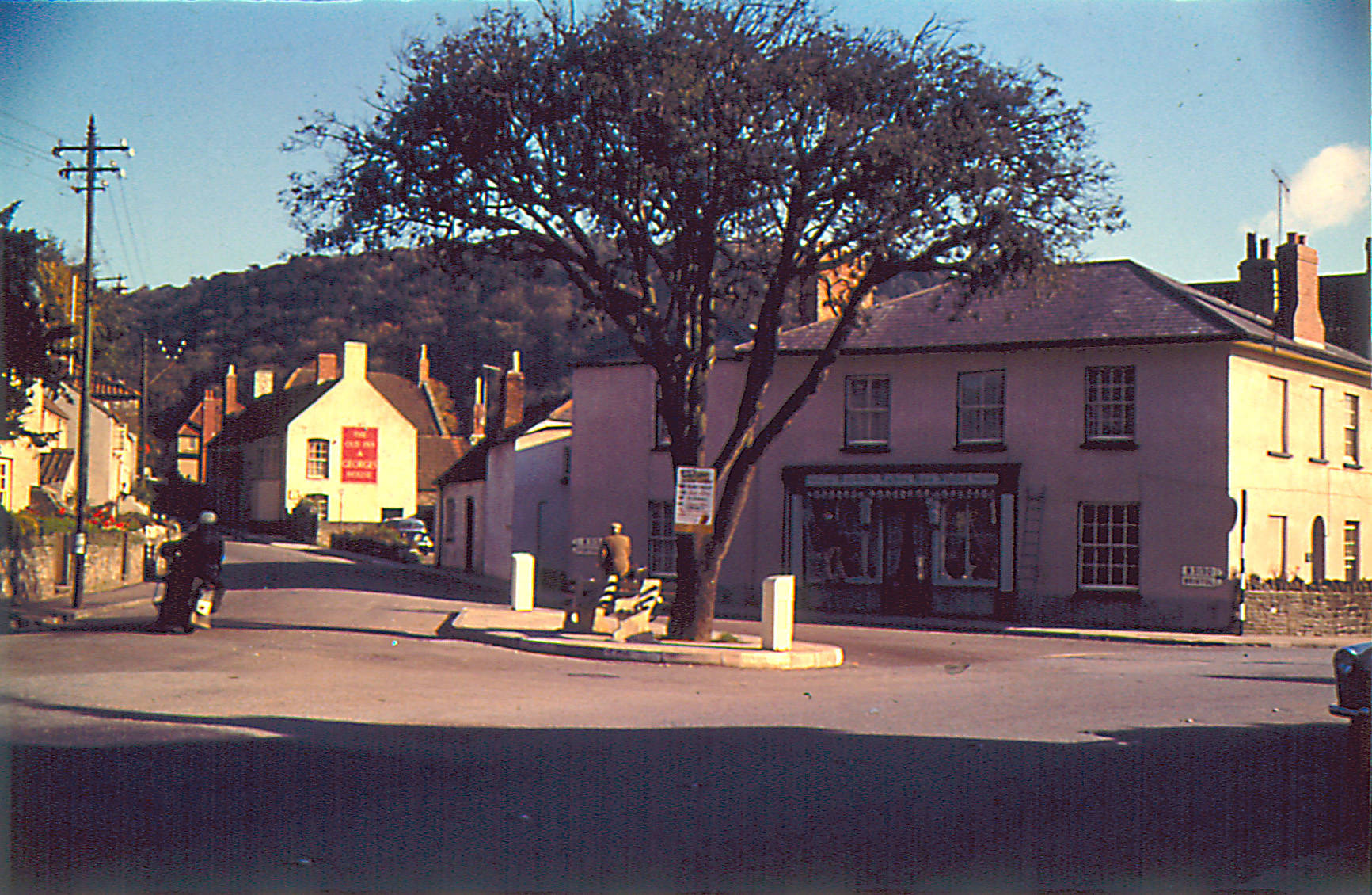 The East End Triangle - left to the Gordano Valley and Portishead, and right to Nailsea and Bristol. The magnificent tree was felled several years ago.
The East End Triangle - left to the Gordano Valley and Portishead, and right to Nailsea and Bristol. The magnificent tree was felled several years ago.
-
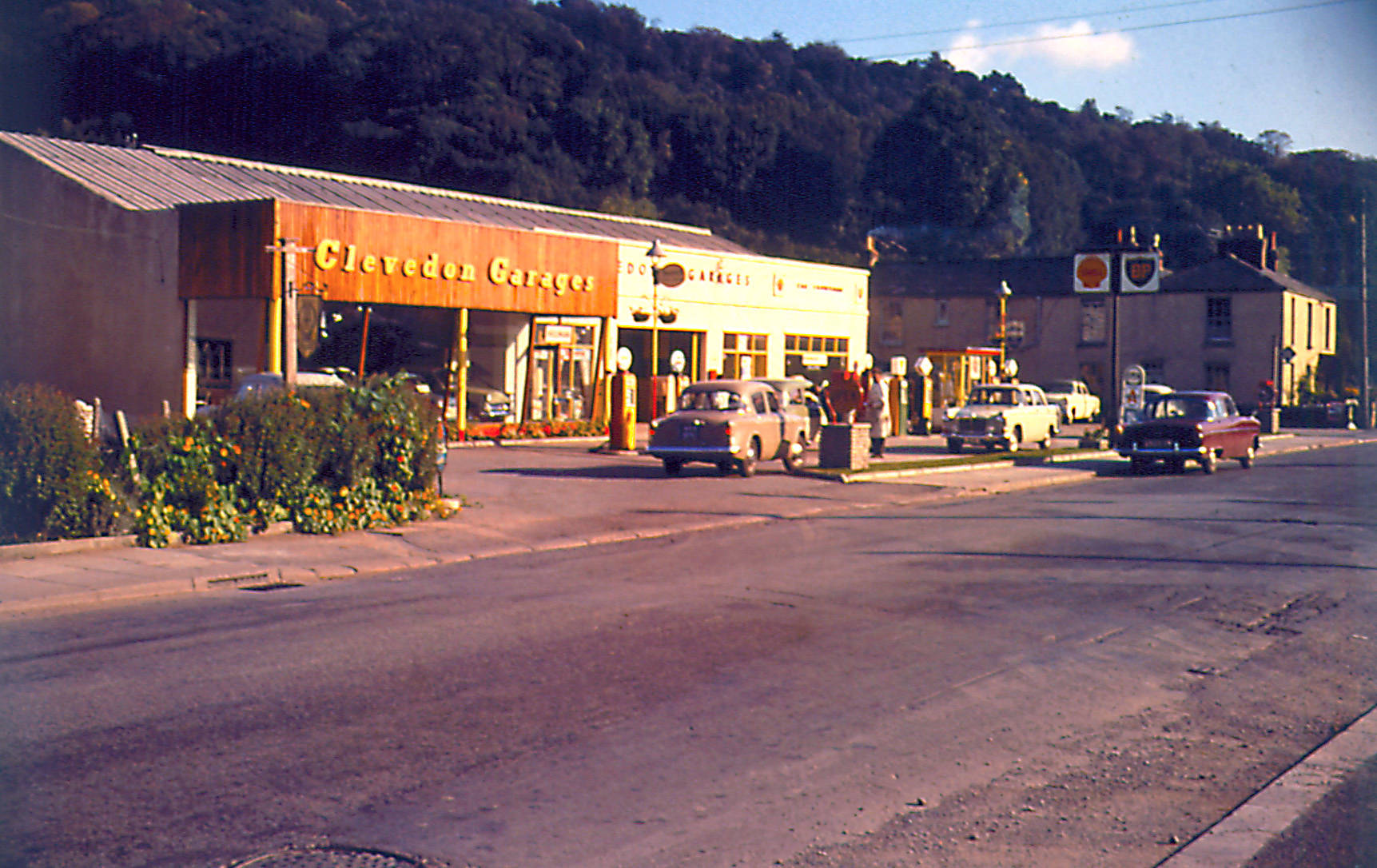 The factory making Hales Cakes was located opposite this garage. The firm had no connection to Geoff Hale.
The factory making Hales Cakes was located opposite this garage. The firm had no connection to Geoff Hale.
-
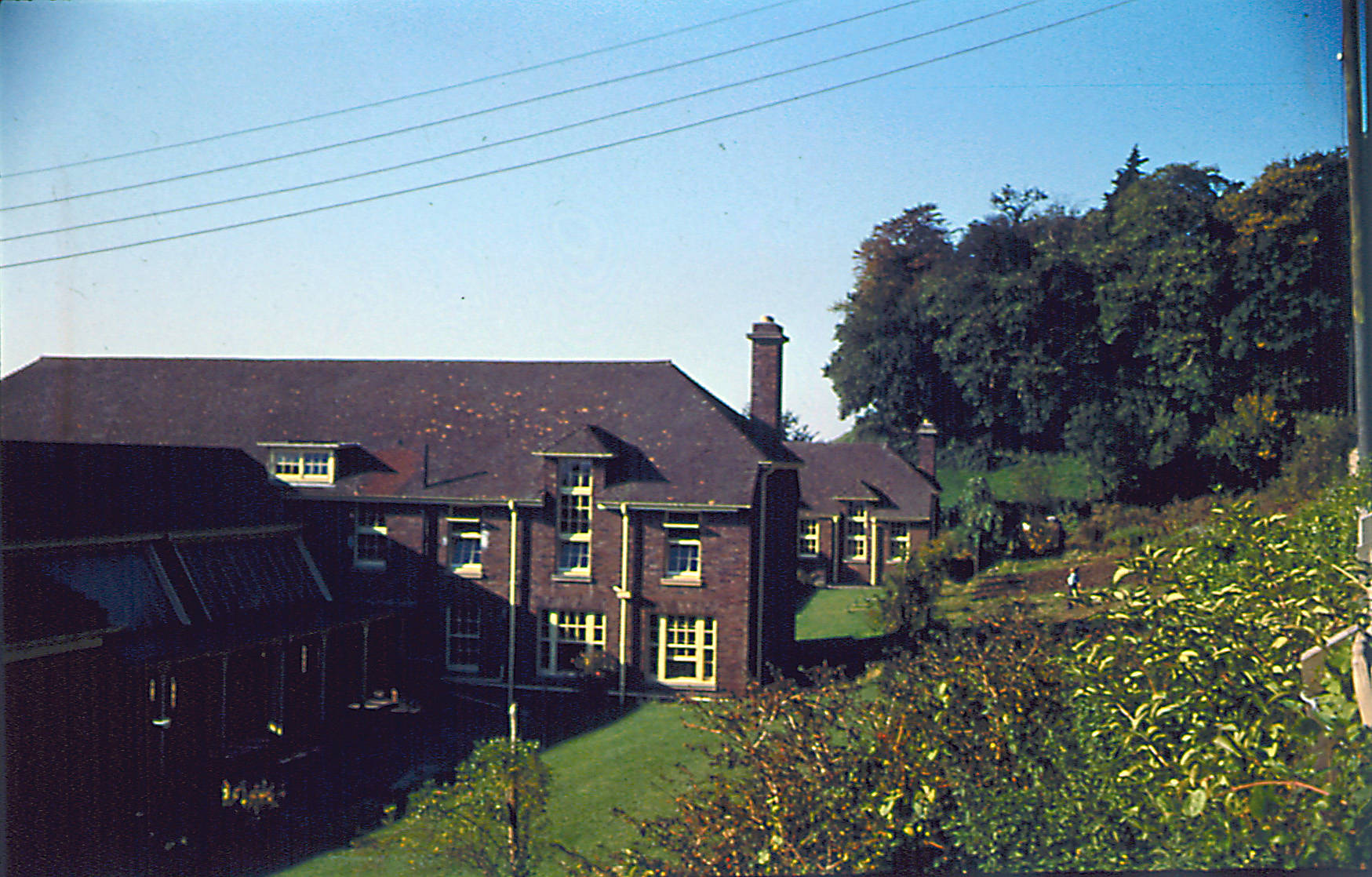 Geoff went to this school from 1950 until 1954, leaving when he was 15. It was a co-educational school for those who had failed their 11 plus or, like him, those who had passed the 11 plus, but had failed the selection interview for the Grammar Schools (Weston or Bristol).
Geoff went to this school from 1950 until 1954, leaving when he was 15. It was a co-educational school for those who had failed their 11 plus or, like him, those who had passed the 11 plus, but had failed the selection interview for the Grammar Schools (Weston or Bristol).
-
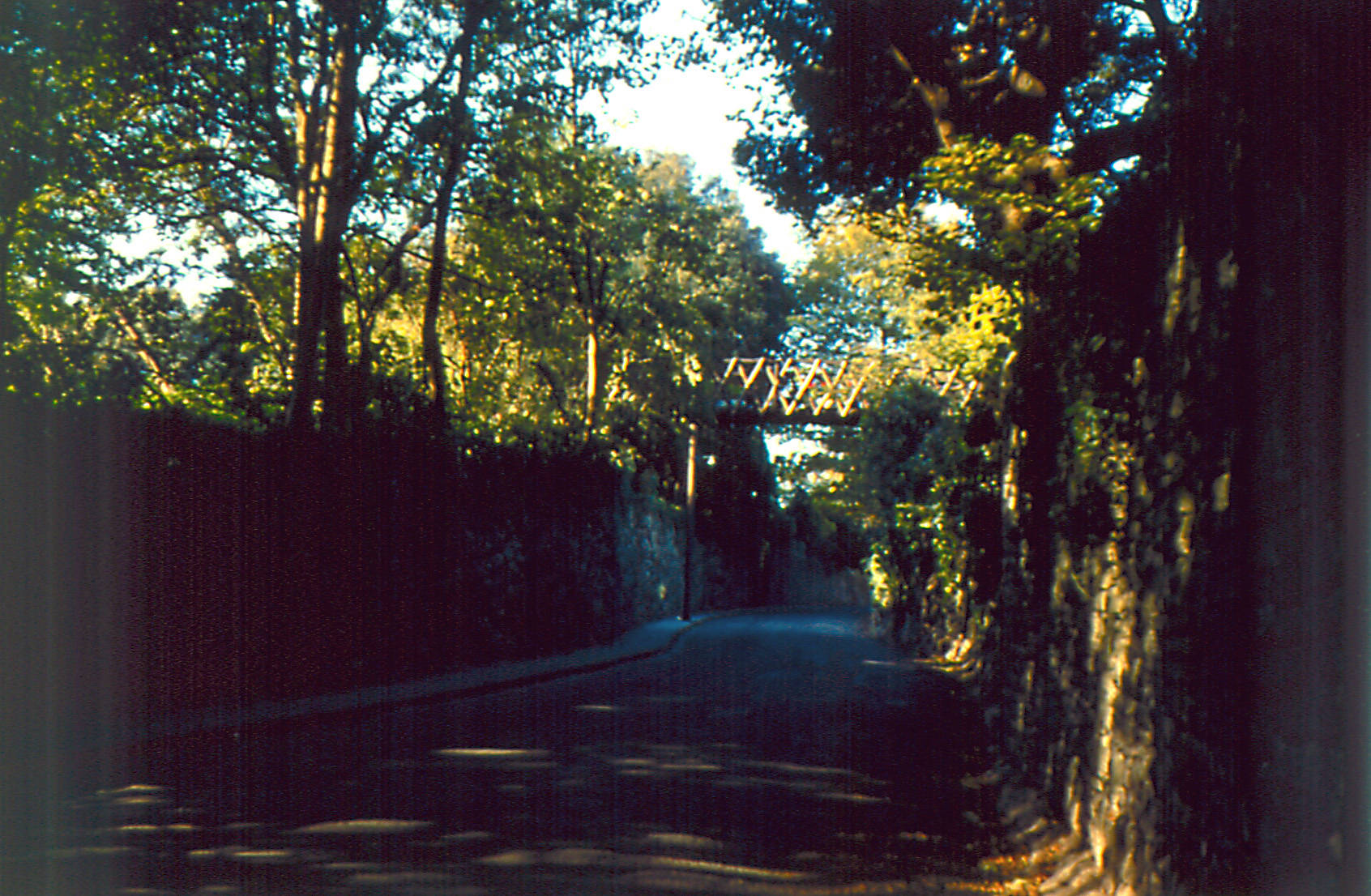 Geoff’s picturesque journey home from school.
Geoff’s picturesque journey home from school.
-
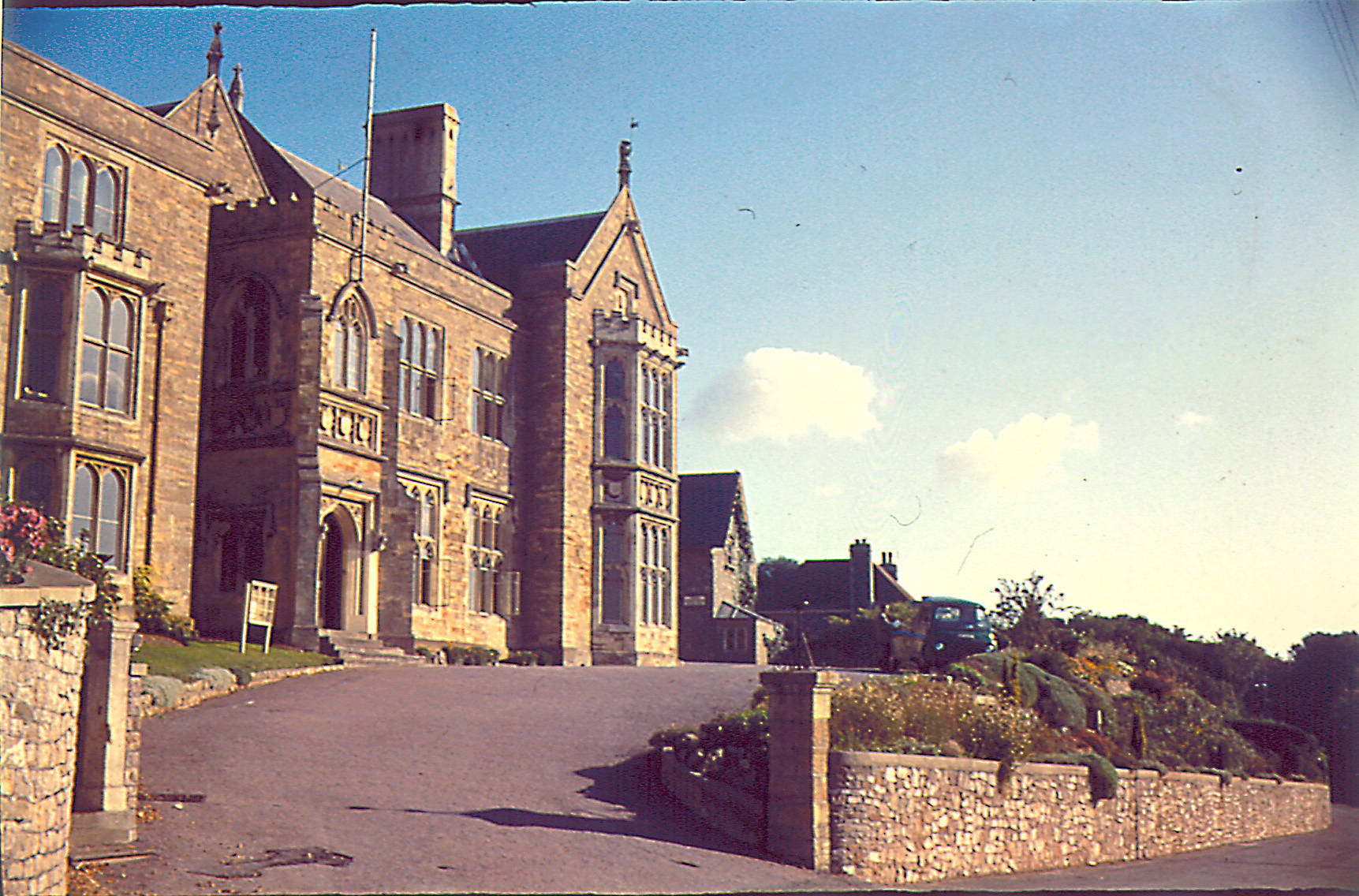 This imposing building in Highdale Road, which commanded a fine view of the valley, was then the offices of the Clevedon Urban District Council. Geoff belonged to the Junior Council, and we held our meetings in the council chamber.
This imposing building in Highdale Road, which commanded a fine view of the valley, was then the offices of the Clevedon Urban District Council. Geoff belonged to the Junior Council, and we held our meetings in the council chamber.
-
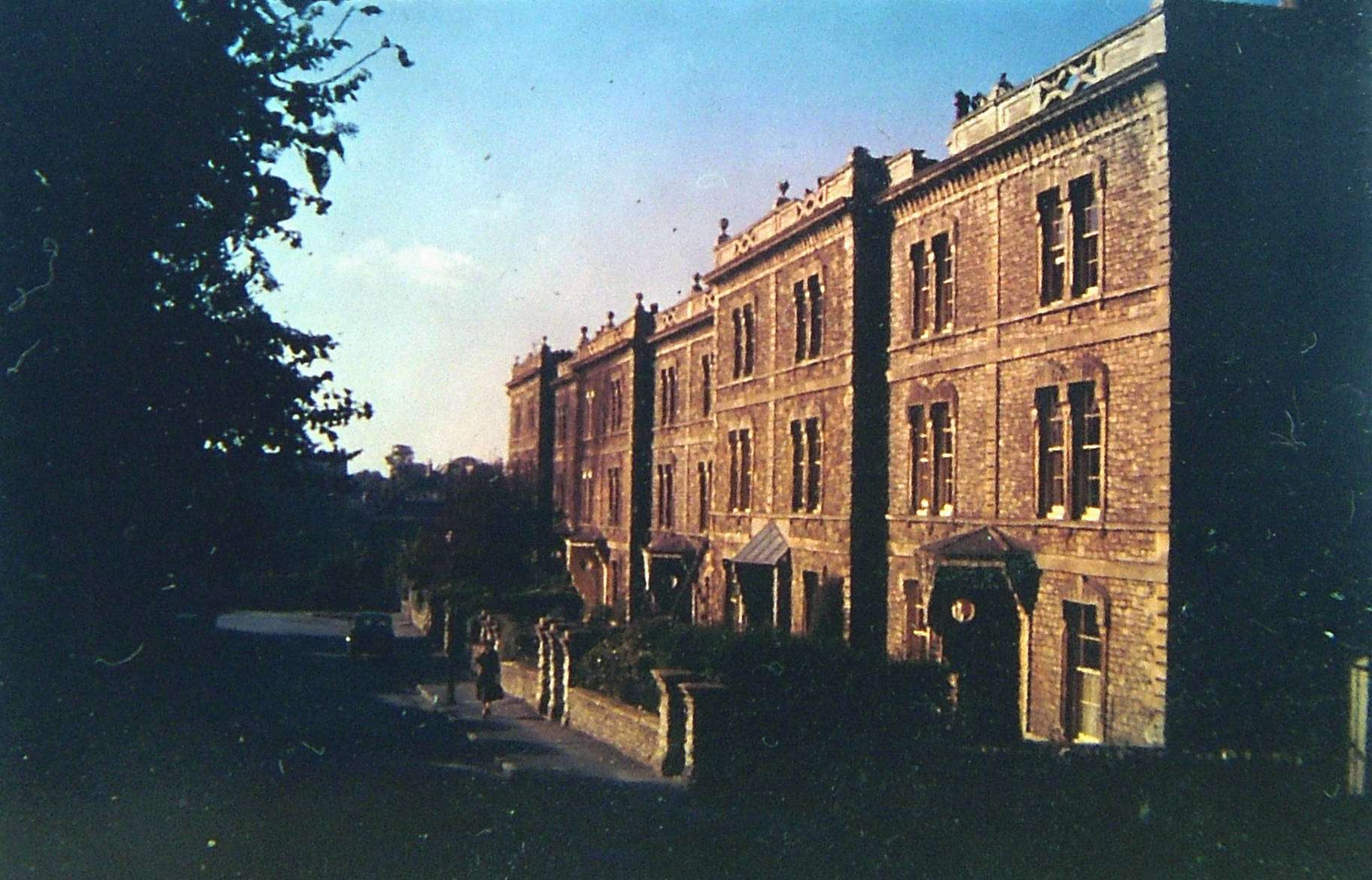 Geoff’s first home in Clevedon was at number 6 Herbert Road. Cricket was played in the road and the ball lost down in the sale-rooms where they had a couple of golden retriever dogs who looked very menacing when they tried to retrieve the ball.
Geoff’s first home in Clevedon was at number 6 Herbert Road. Cricket was played in the road and the ball lost down in the sale-rooms where they had a couple of golden retriever dogs who looked very menacing when they tried to retrieve the ball.
-
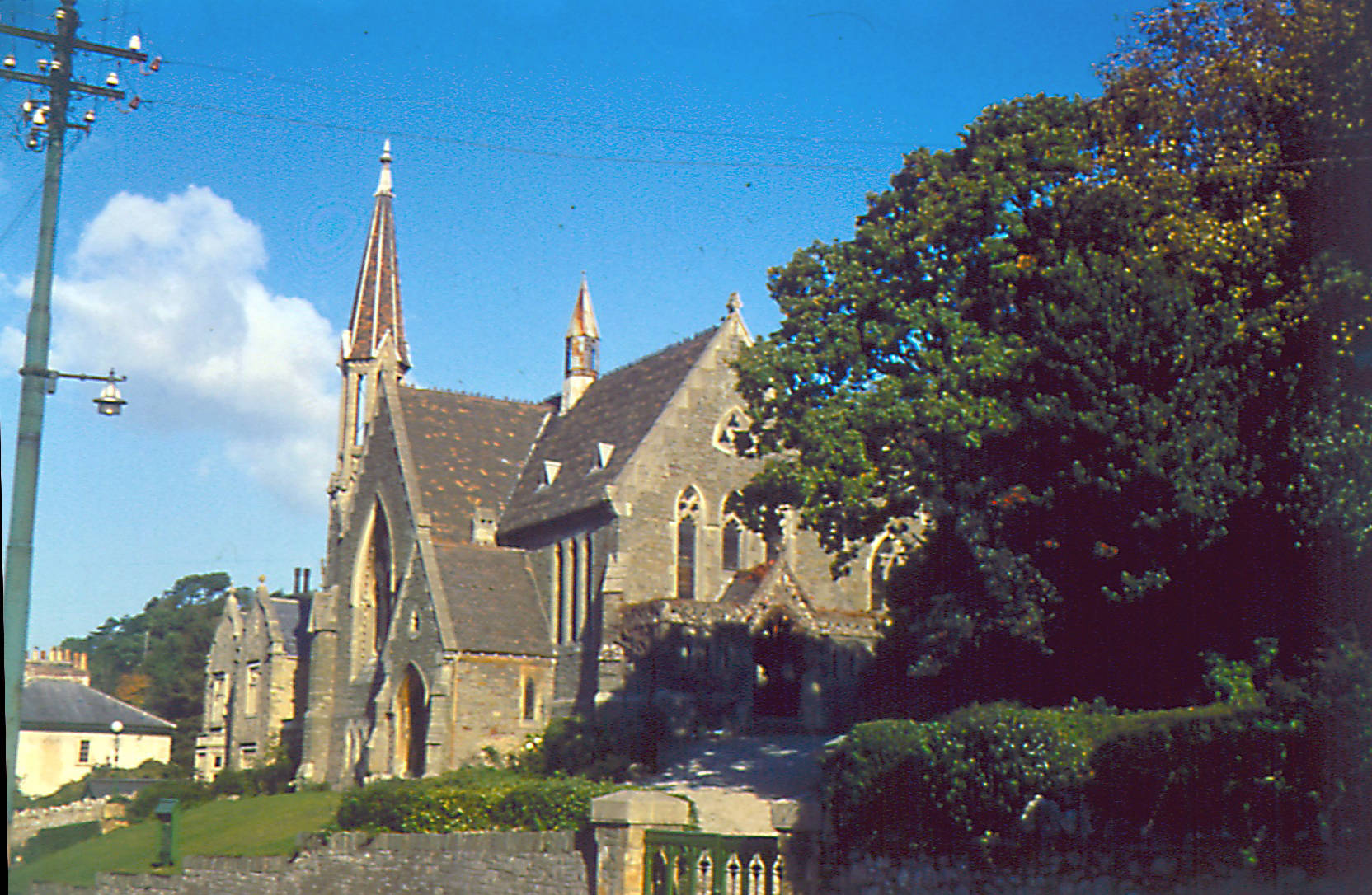 A view of the Congregational Church taken from the top of Herbert Road, where Geoff lived in 1947.
A view of the Congregational Church taken from the top of Herbert Road, where Geoff lived in 1947.
-
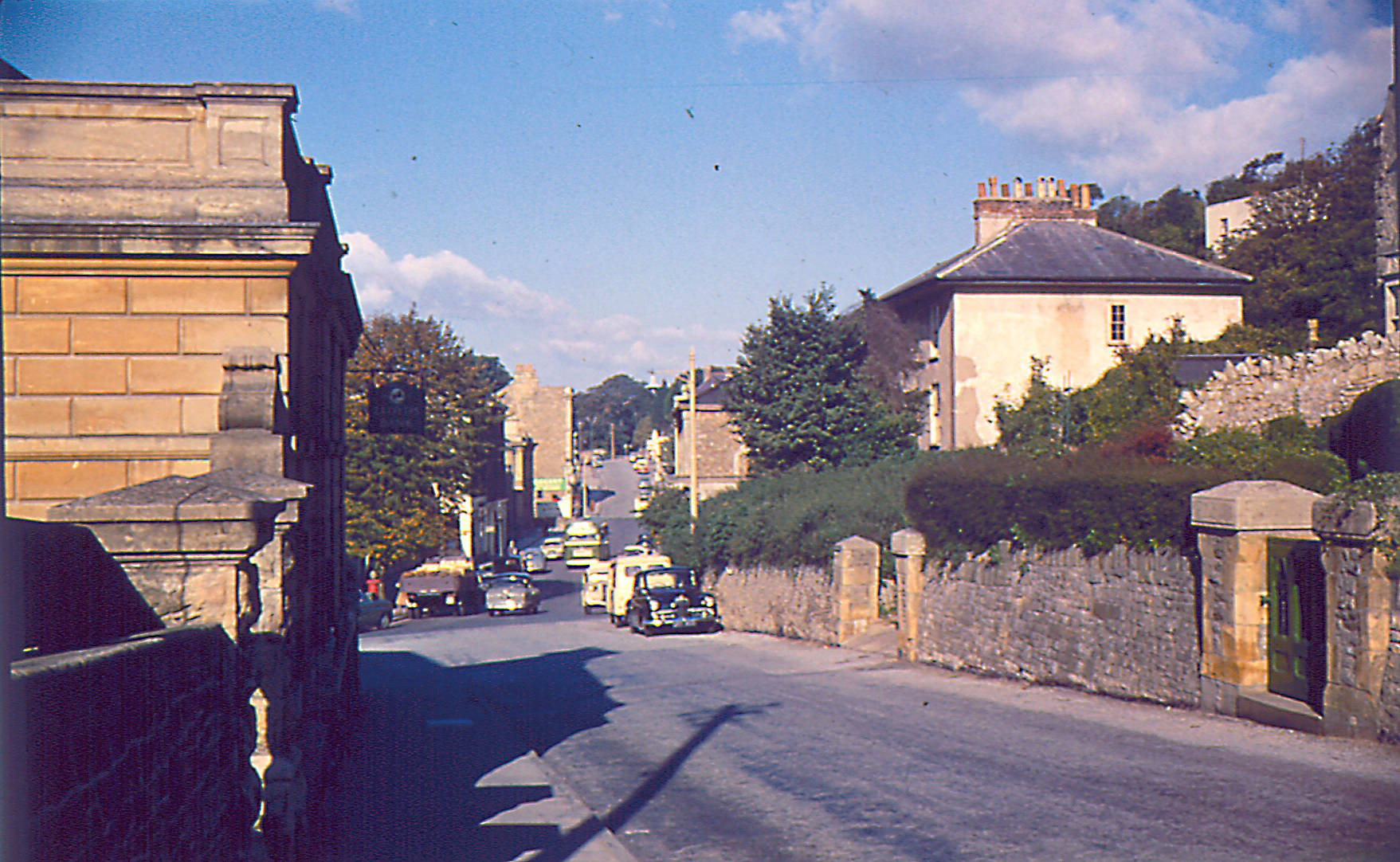 Taken from just opposite the Congregational Church. The building on the left was Lloyds Bank.
Taken from just opposite the Congregational Church. The building on the left was Lloyds Bank.
-
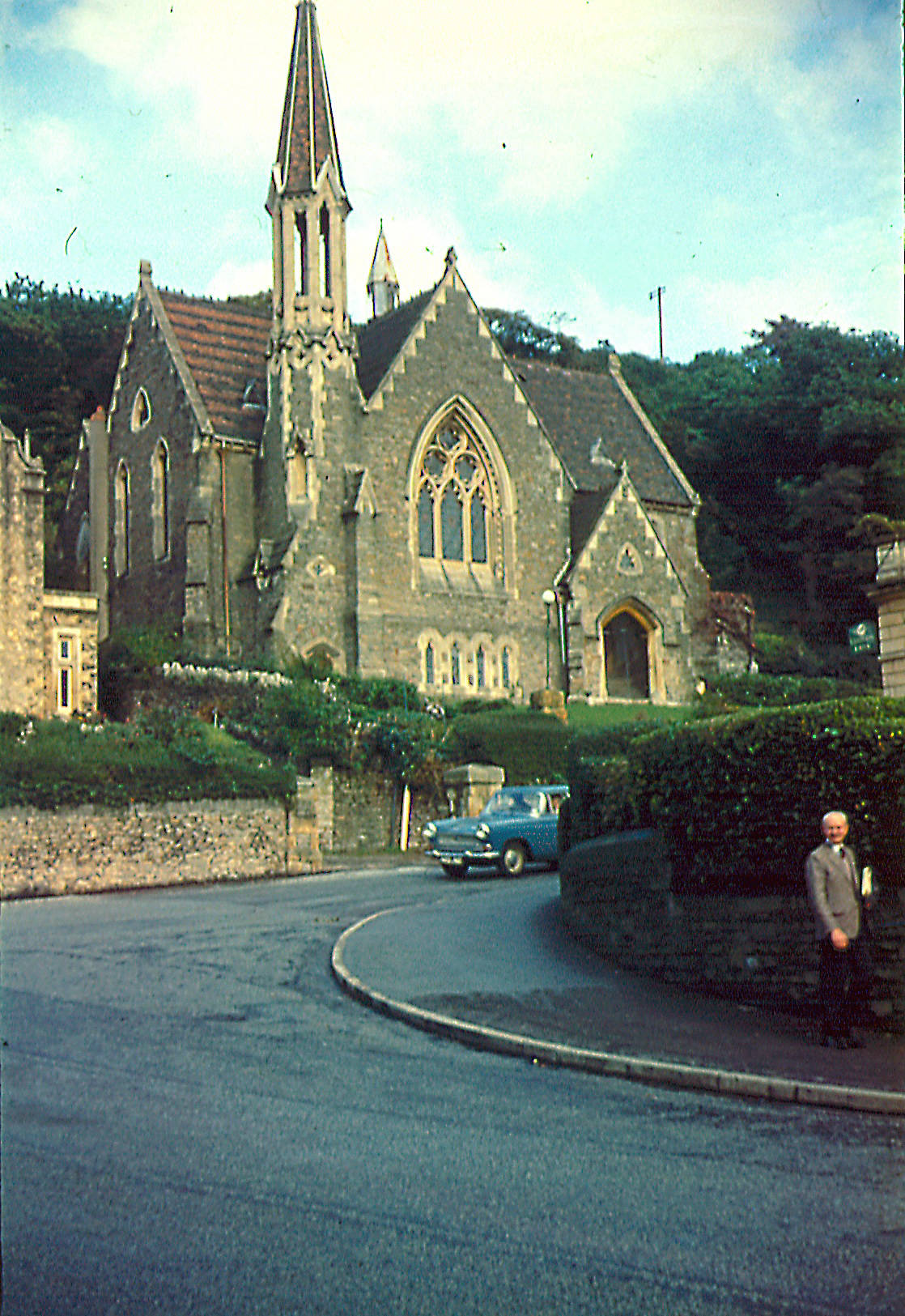 The man looking at the camera on the right was a local newsagent called Jack Hawdon.
The man looking at the camera on the right was a local newsagent called Jack Hawdon.
-
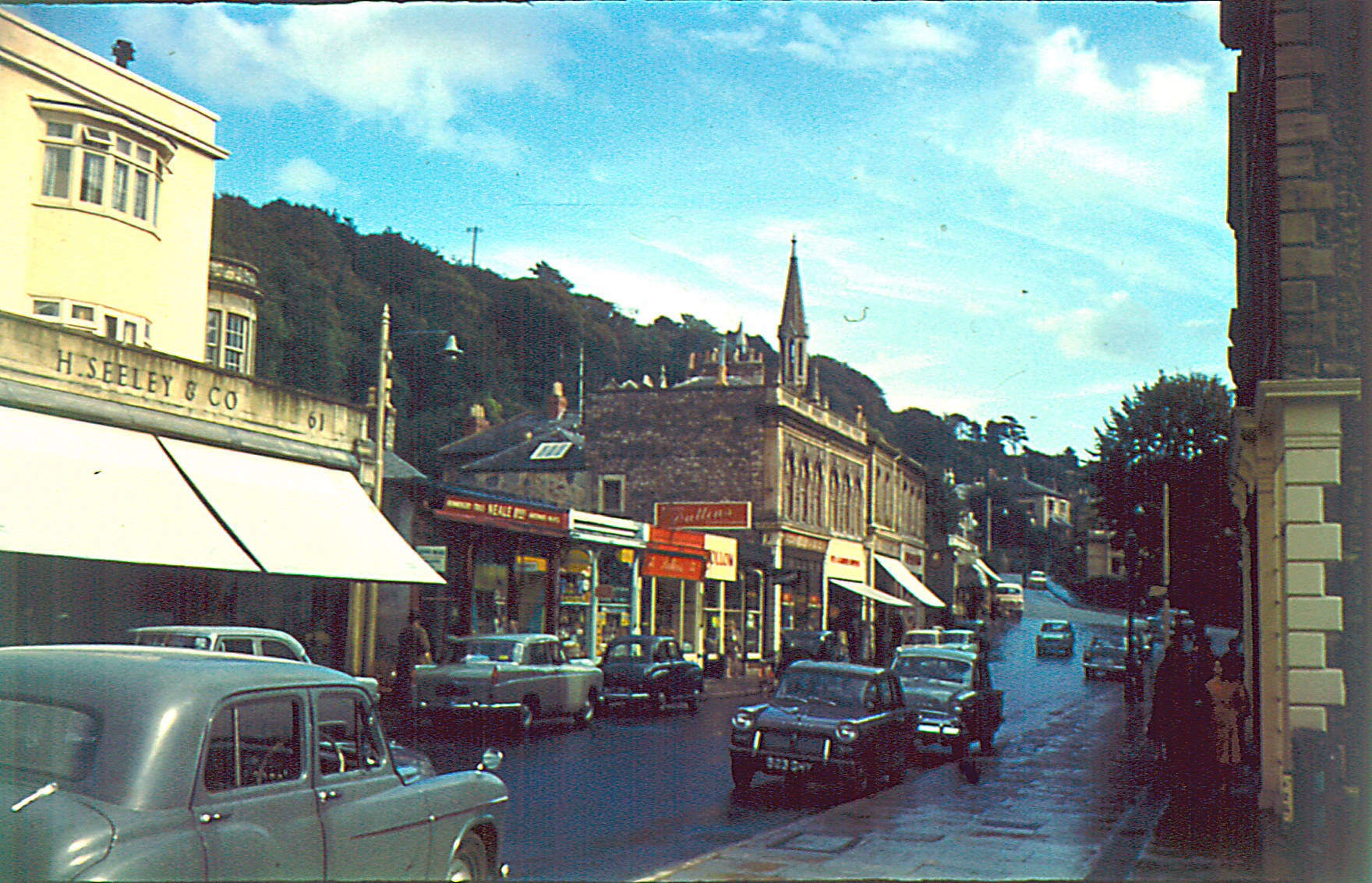 The only shop in this 1960s photograph that is still trading in 2014 is Pullins the Bakers - trading in the red shop in the middle.
The only shop in this 1960s photograph that is still trading in 2014 is Pullins the Bakers - trading in the red shop in the middle.
-
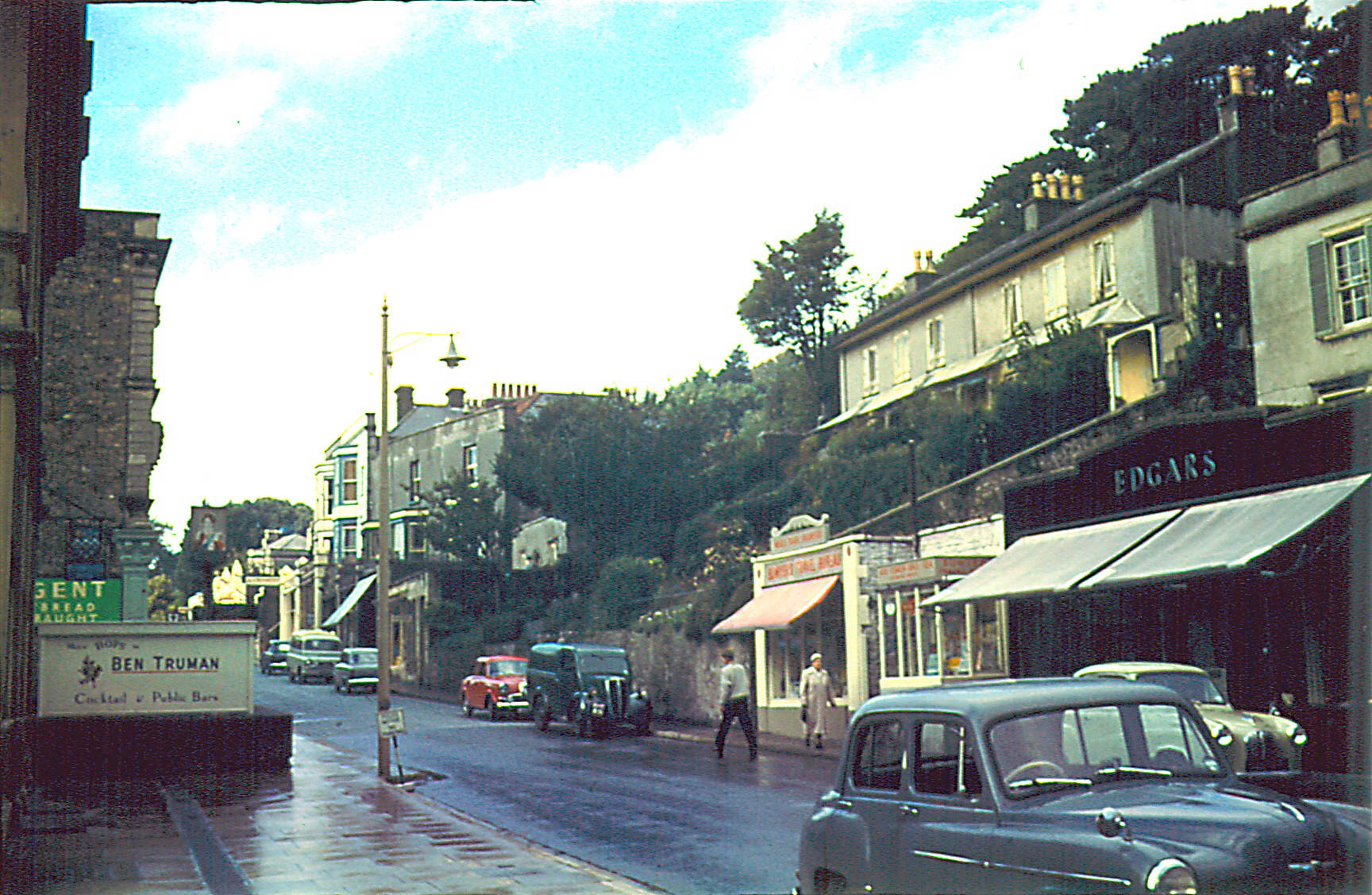 The Regent, on the left, is now (2014) undergoing a conversion to luxury apartments.
The Regent, on the left, is now (2014) undergoing a conversion to luxury apartments.
-
 The only shop in this 1960s photograph that is still trading in 2014 is Rossiters the Jewellers - trading in the shop in the middle of the picture.
The only shop in this 1960s photograph that is still trading in 2014 is Rossiters the Jewellers - trading in the shop in the middle of the picture.
-
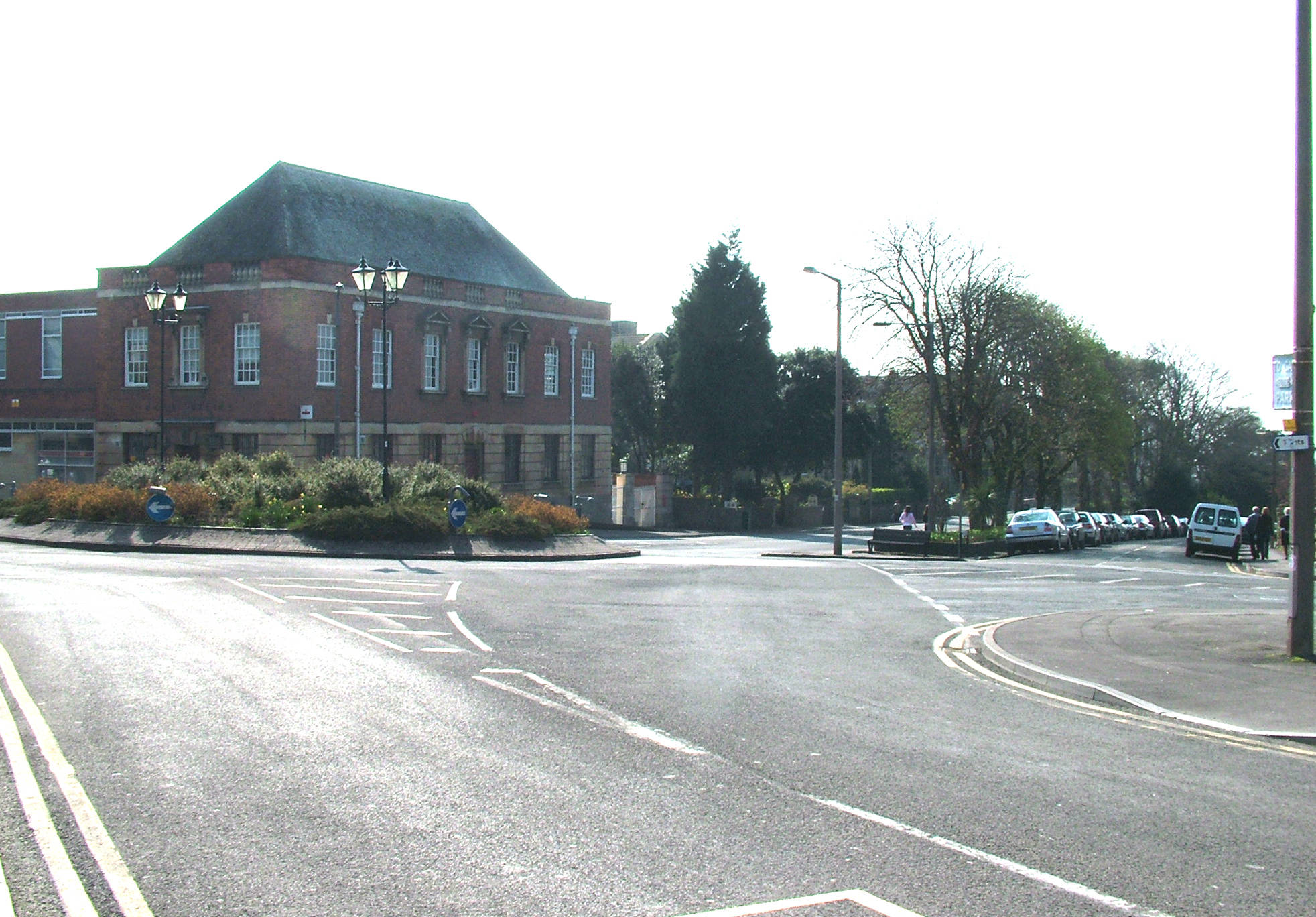 The General Post Office: where Geoff bought 10 Premium Bonds during the first week of issue, and which have never been drawn! The manual telephone exchange was in Linden Road (turn left from this picture), just before the Herbert Road.
The General Post Office: where Geoff bought 10 Premium Bonds during the first week of issue, and which have never been drawn! The manual telephone exchange was in Linden Road (turn left from this picture), just before the Herbert Road.
-
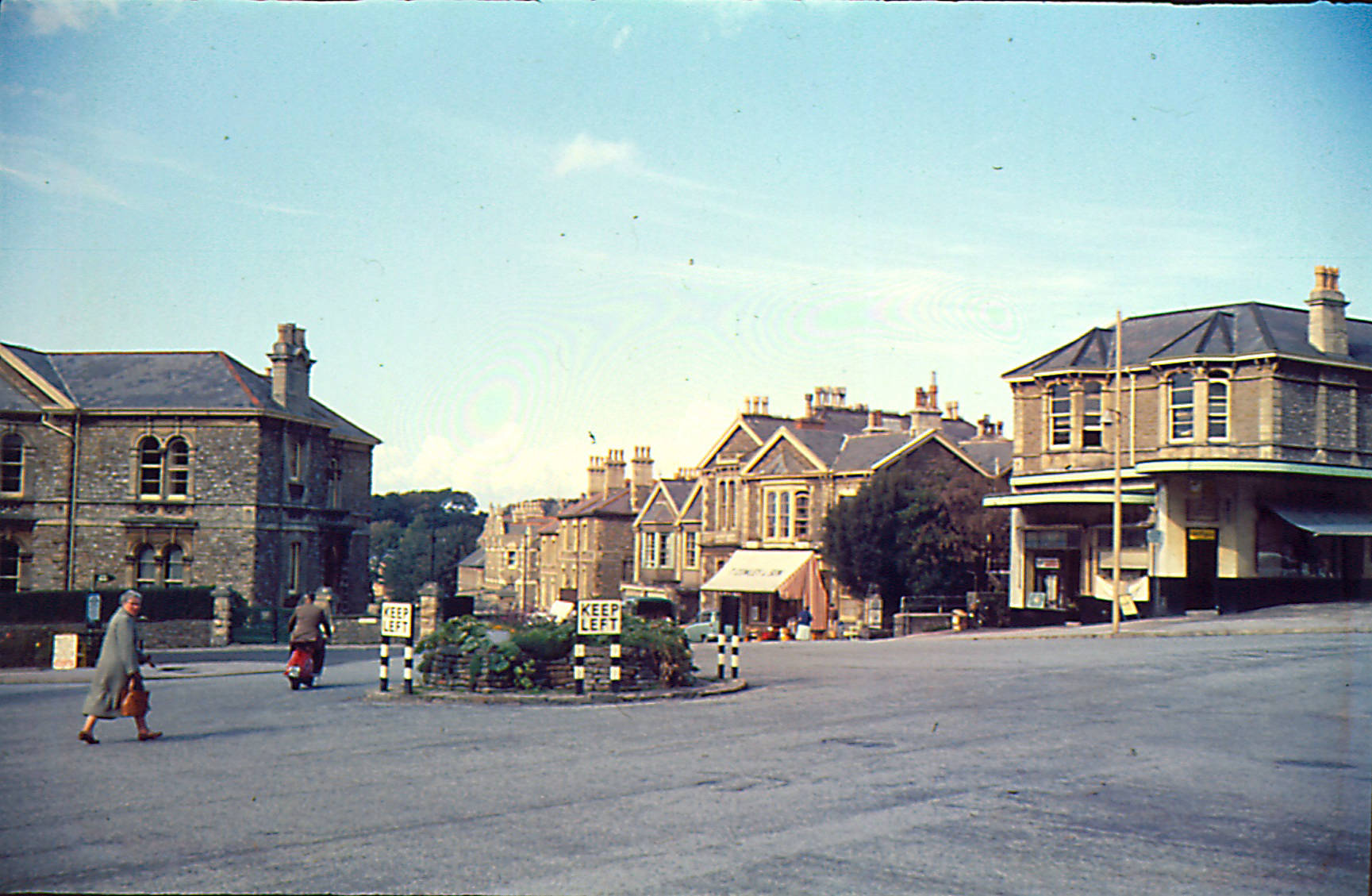 The corner shop on the right was a newsagent and sweet shop. Geoff can remember spending his sweet ration in there, and on April 14th 1950 he bought the first edition of the ‘Eagle’ comic, featuring Dan Dare, from this shop.
The corner shop on the right was a newsagent and sweet shop. Geoff can remember spending his sweet ration in there, and on April 14th 1950 he bought the first edition of the ‘Eagle’ comic, featuring Dan Dare, from this shop.
-
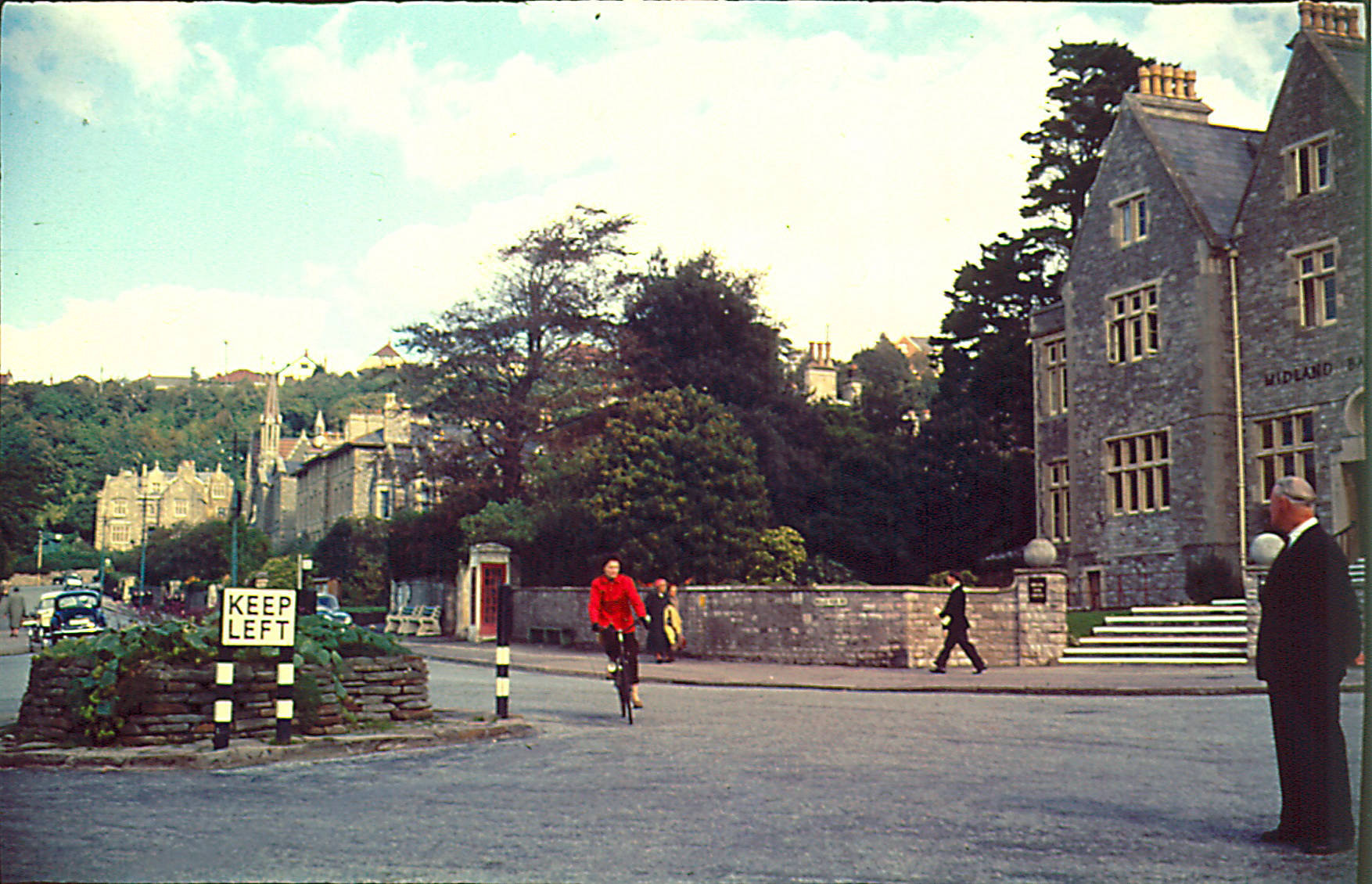 As can be seen, the Midland Bank is on the right, and further up Bellevue Road were the offices of Alonzo Dawes, Son and Hoddell, the estate agents who also ran the sale-rooms in Herbert Road and the live-stock market at Yatton.
As can be seen, the Midland Bank is on the right, and further up Bellevue Road were the offices of Alonzo Dawes, Son and Hoddell, the estate agents who also ran the sale-rooms in Herbert Road and the live-stock market at Yatton.
-
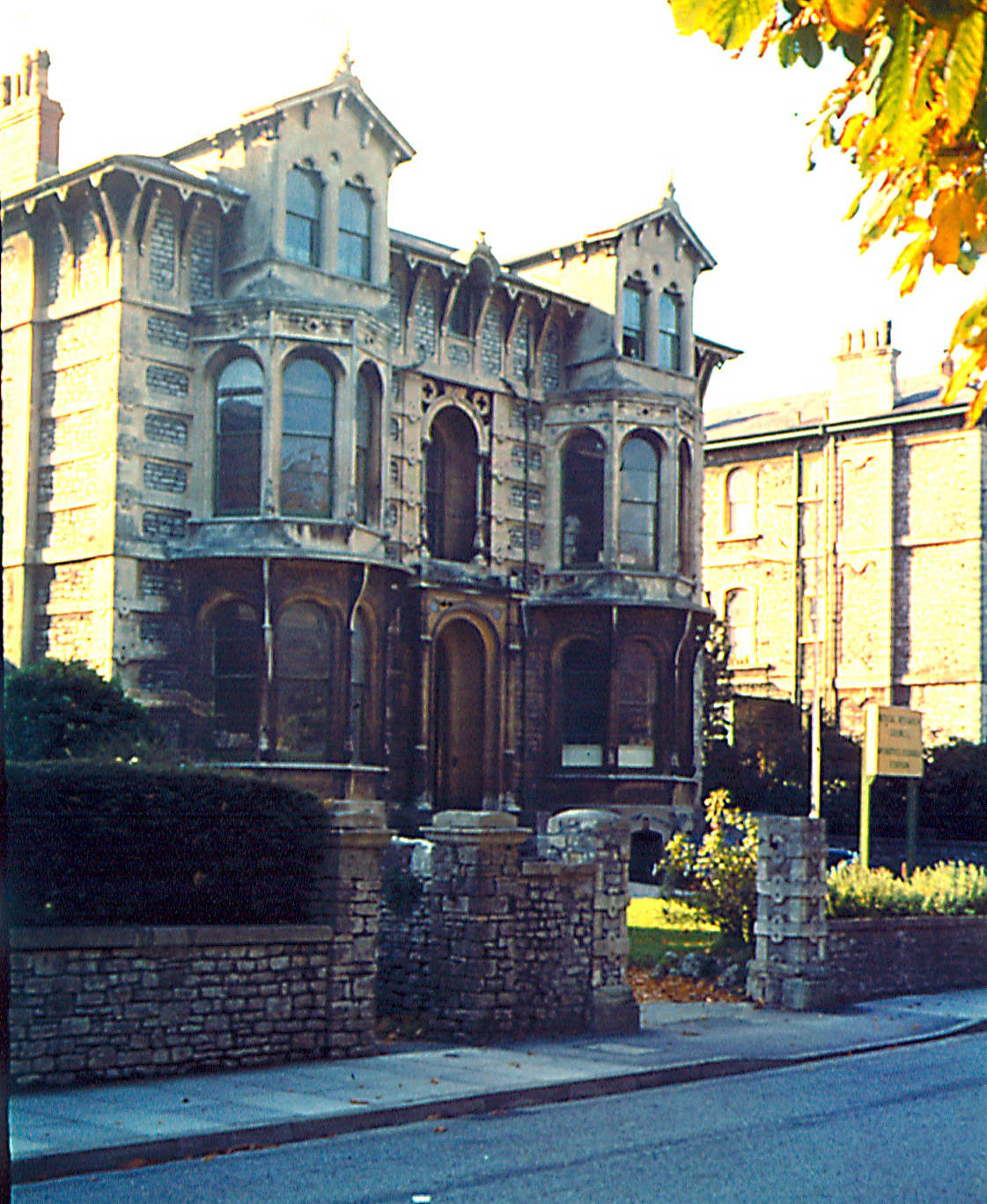 Where Geoff’s father worked from 1947, when this house in Elton Road was owned by Distillers Limited, through till 1961 when the Medical Research Council closed the station down.
Where Geoff’s father worked from 1947, when this house in Elton Road was owned by Distillers Limited, through till 1961 when the Medical Research Council closed the station down.
-
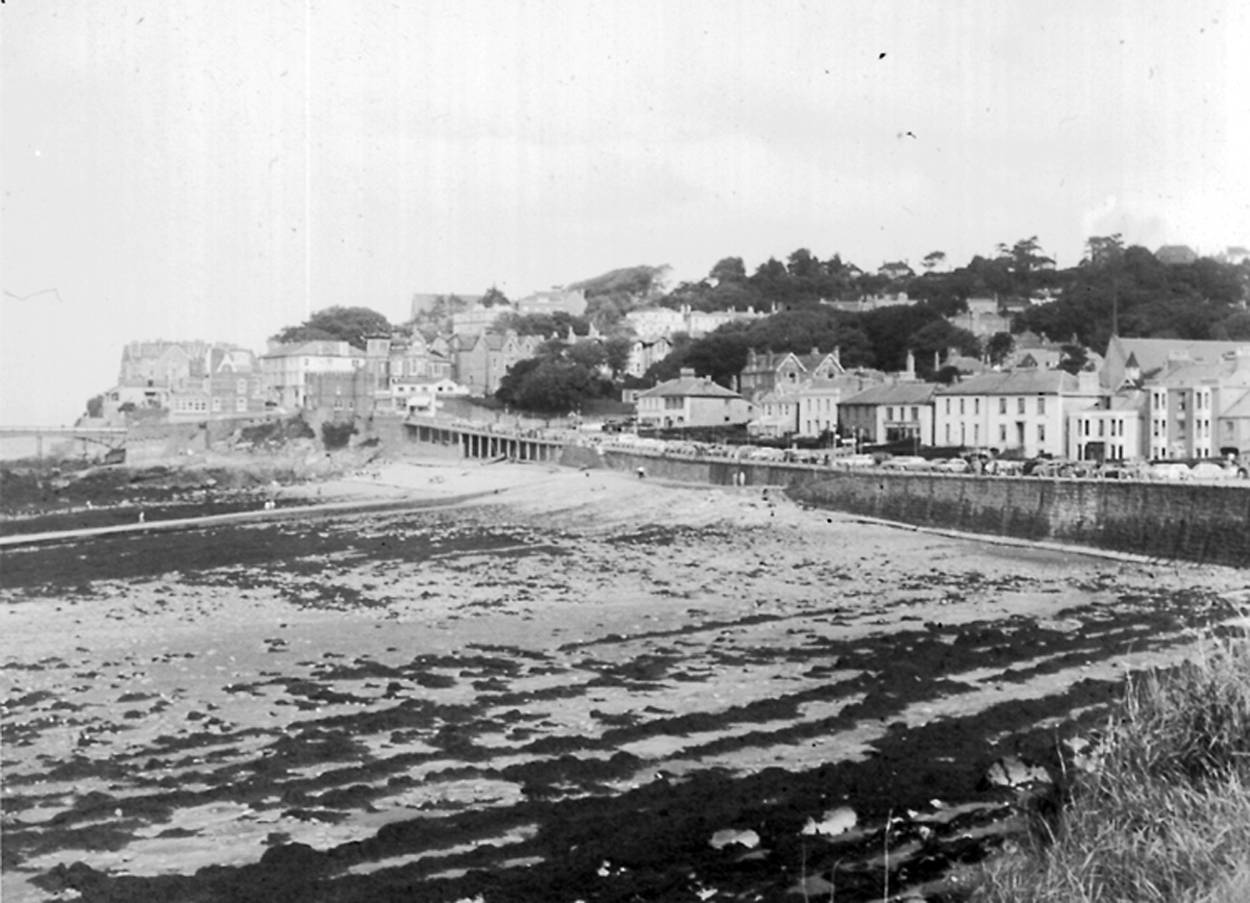 Clevedon’s main beach.
Clevedon’s main beach.






